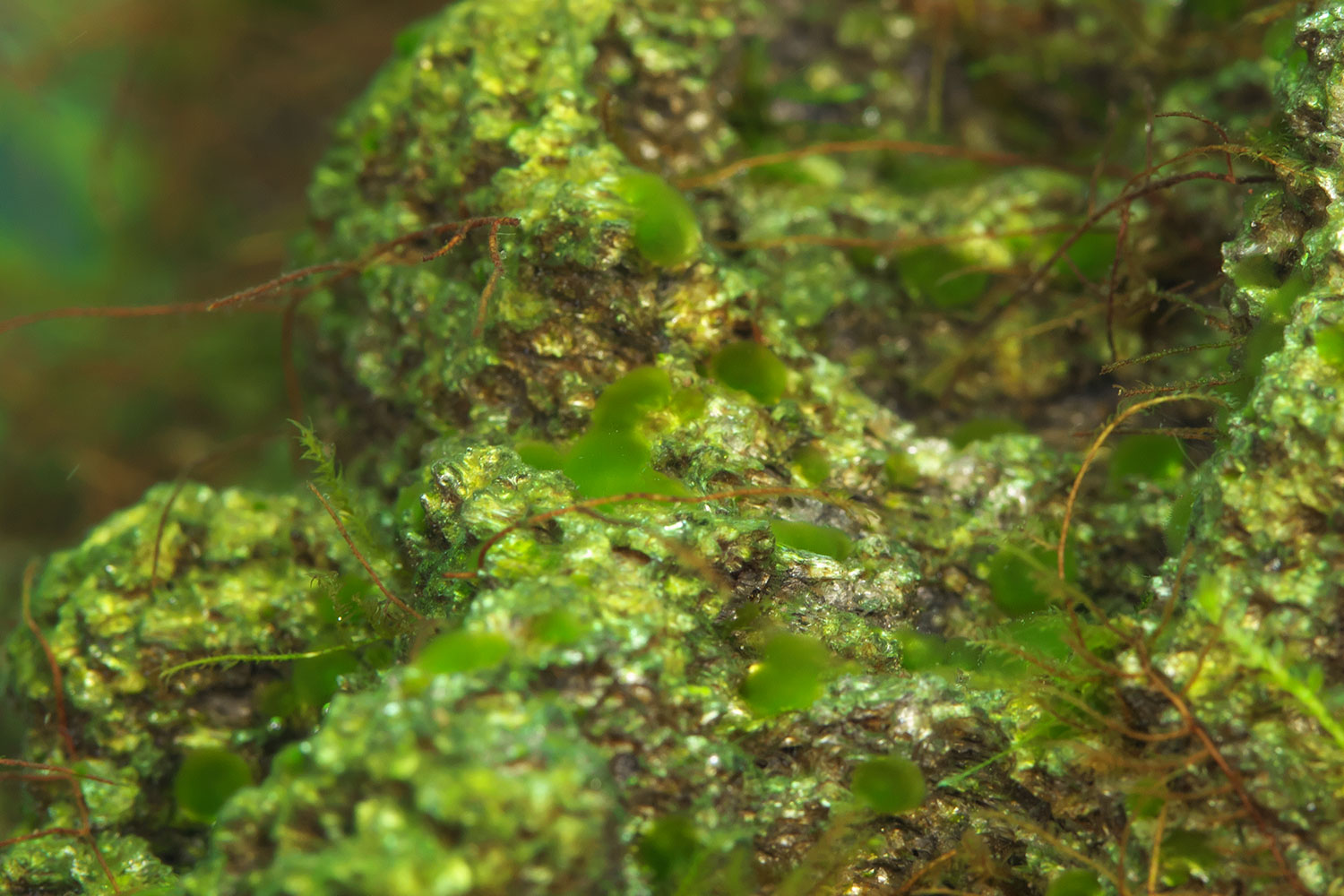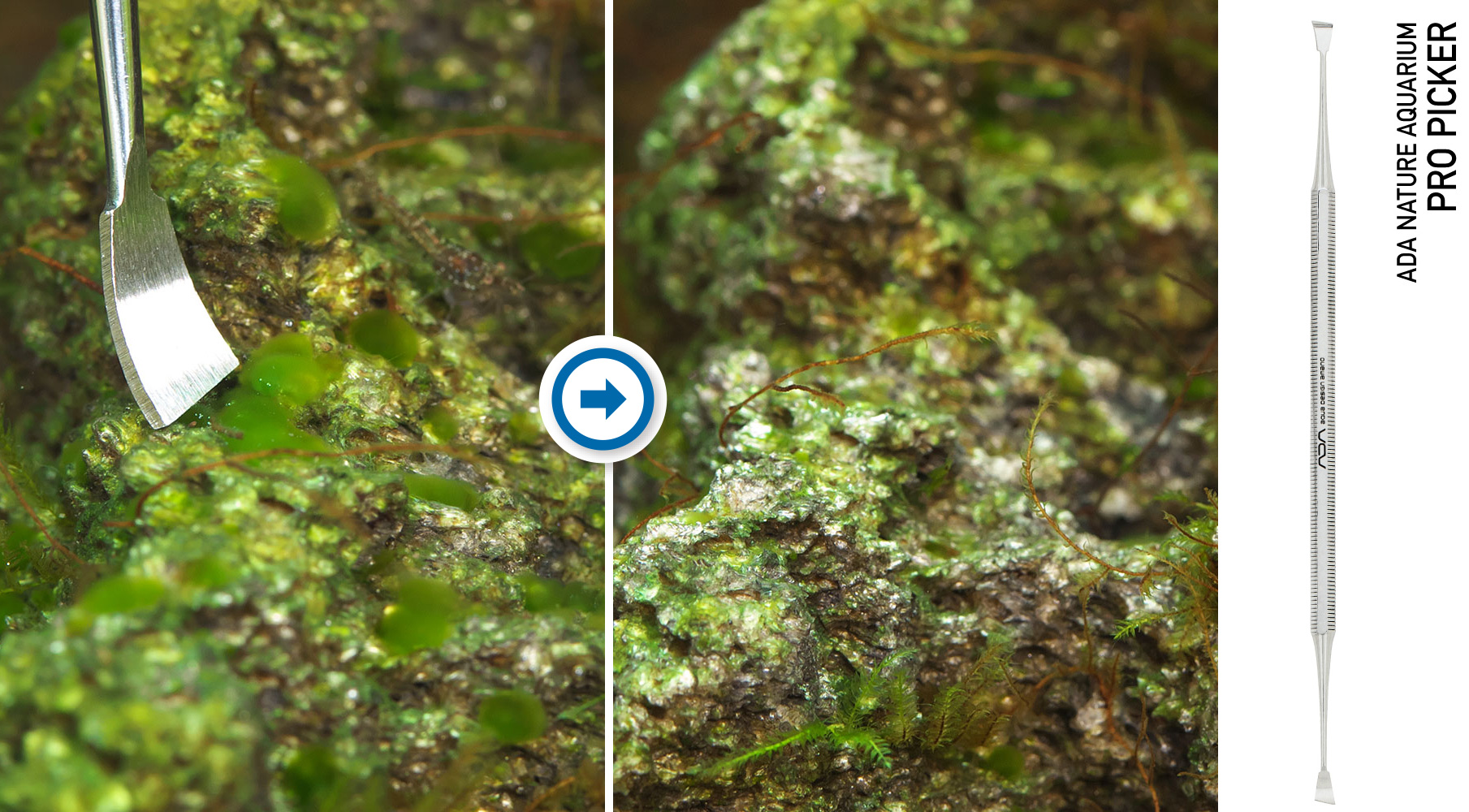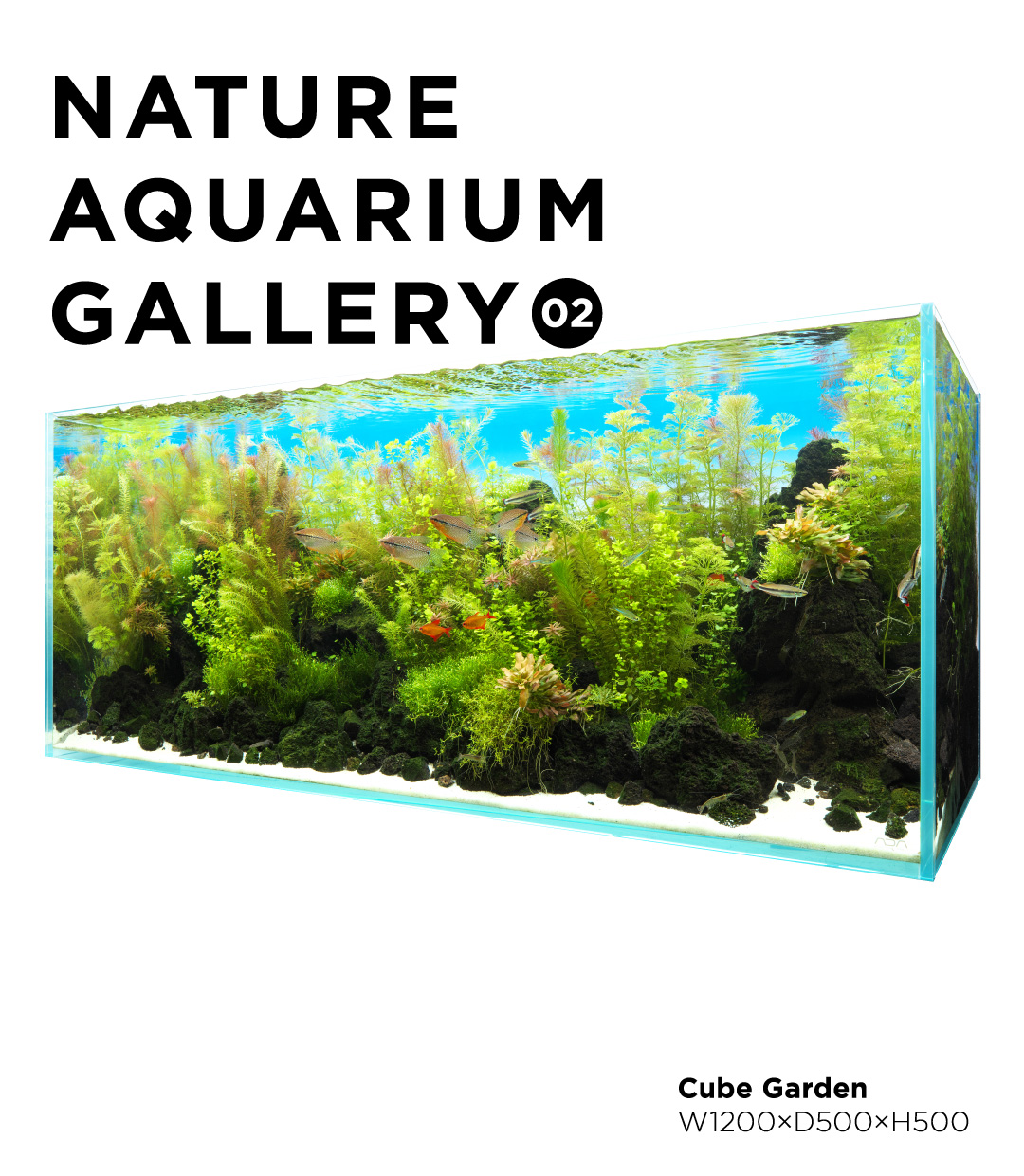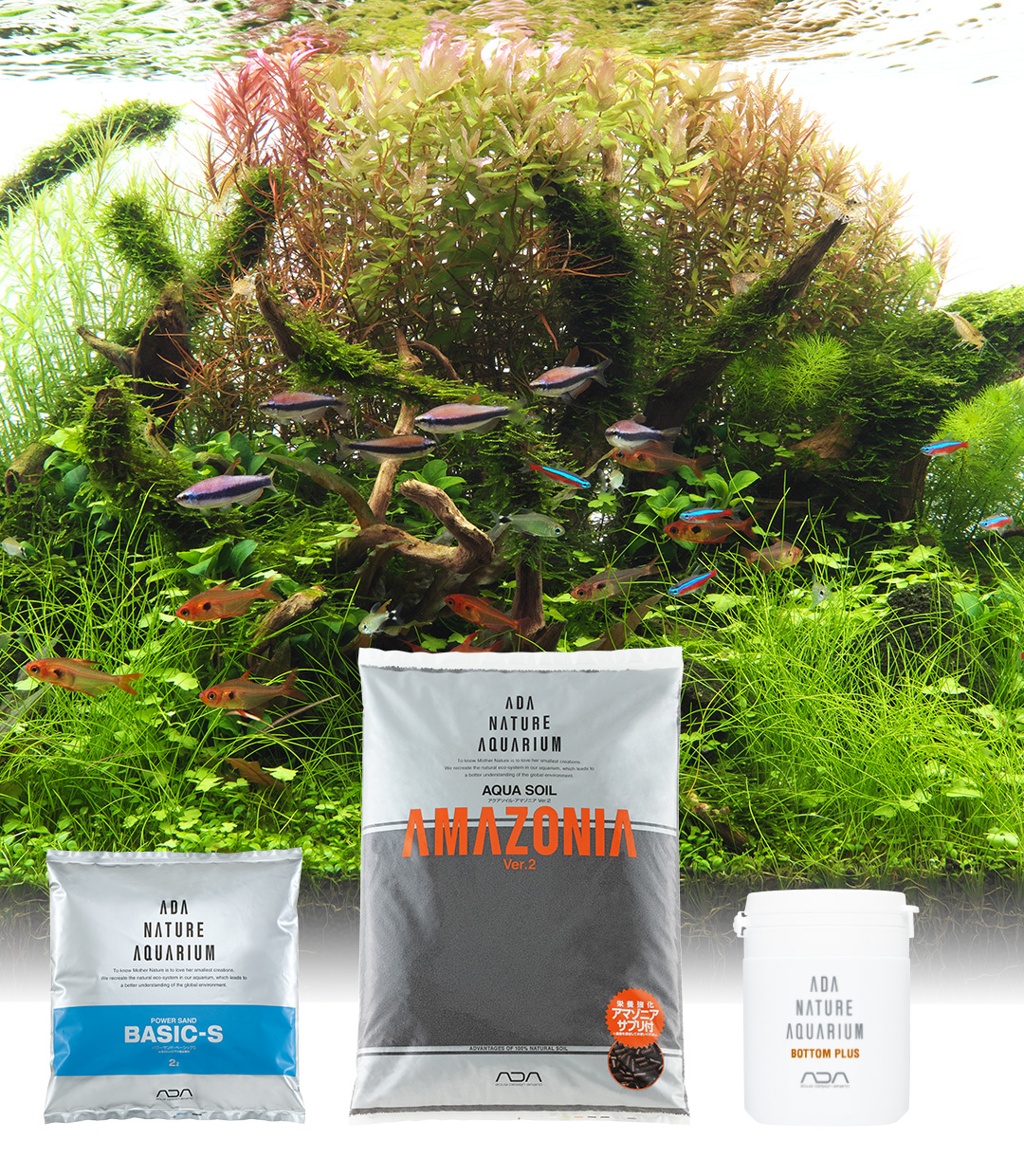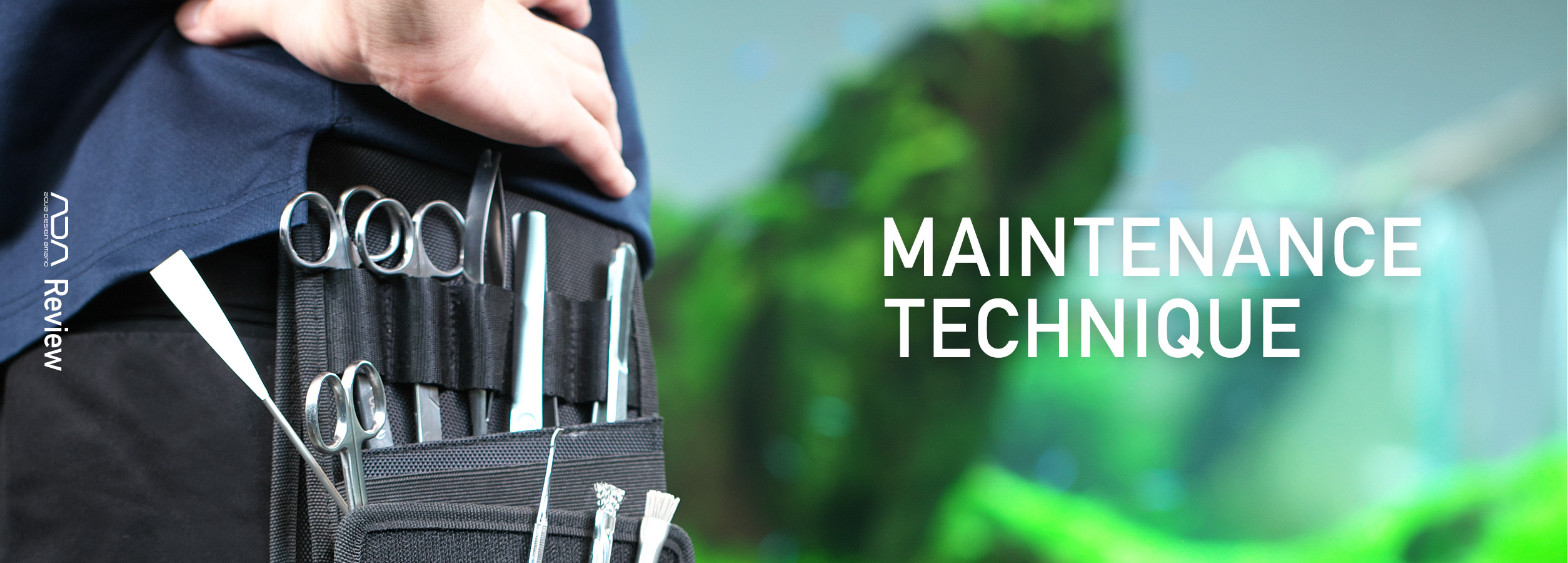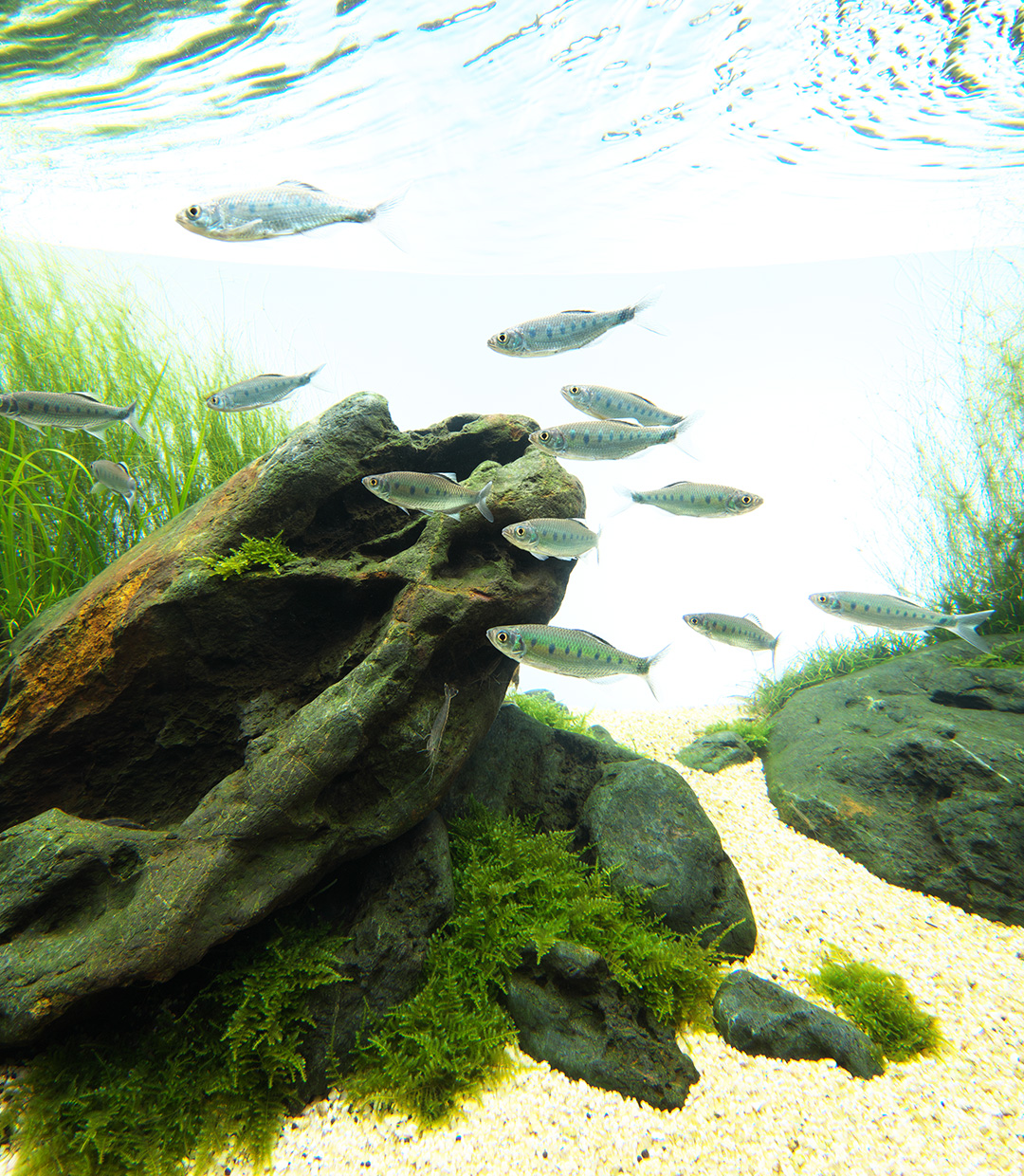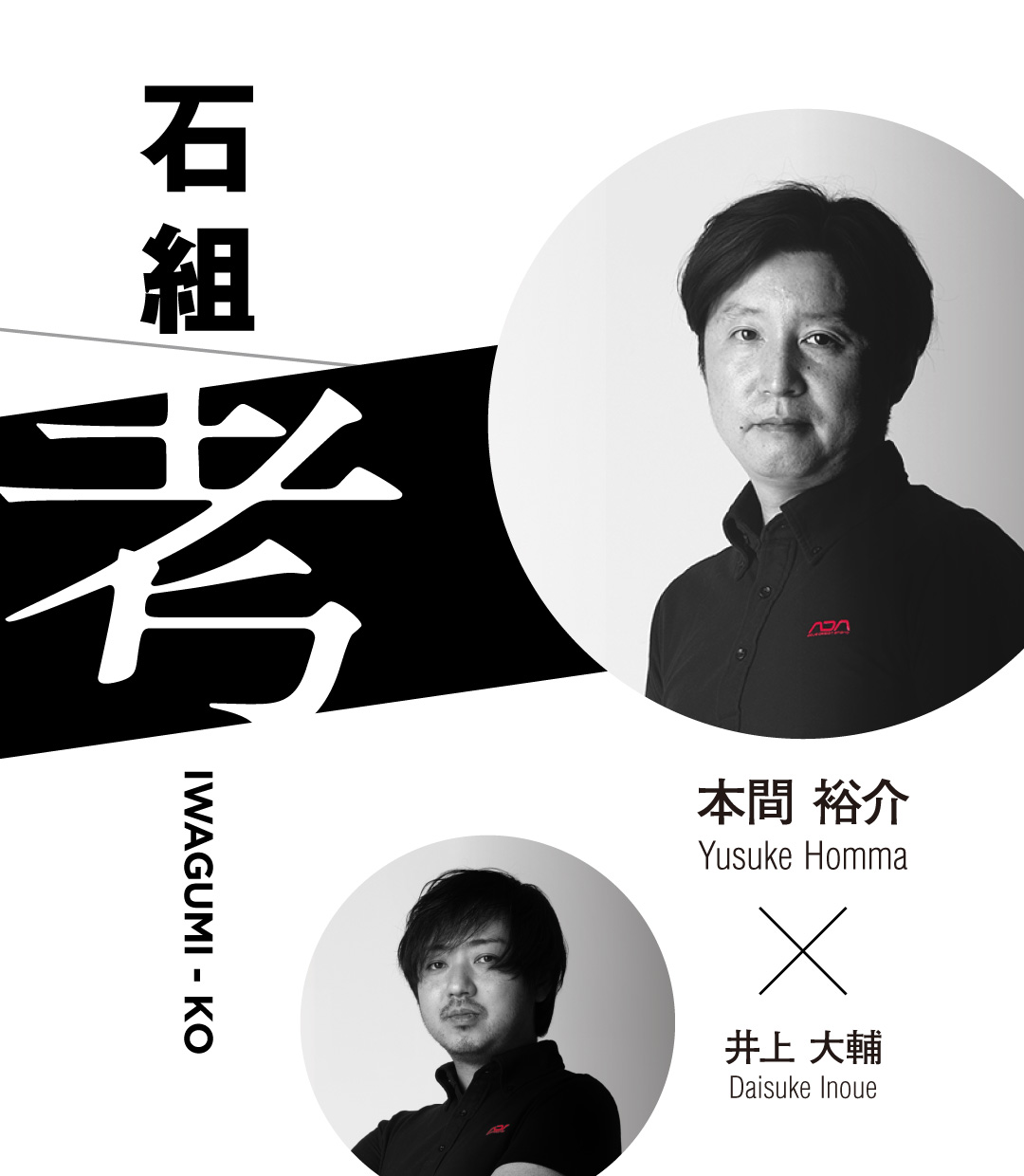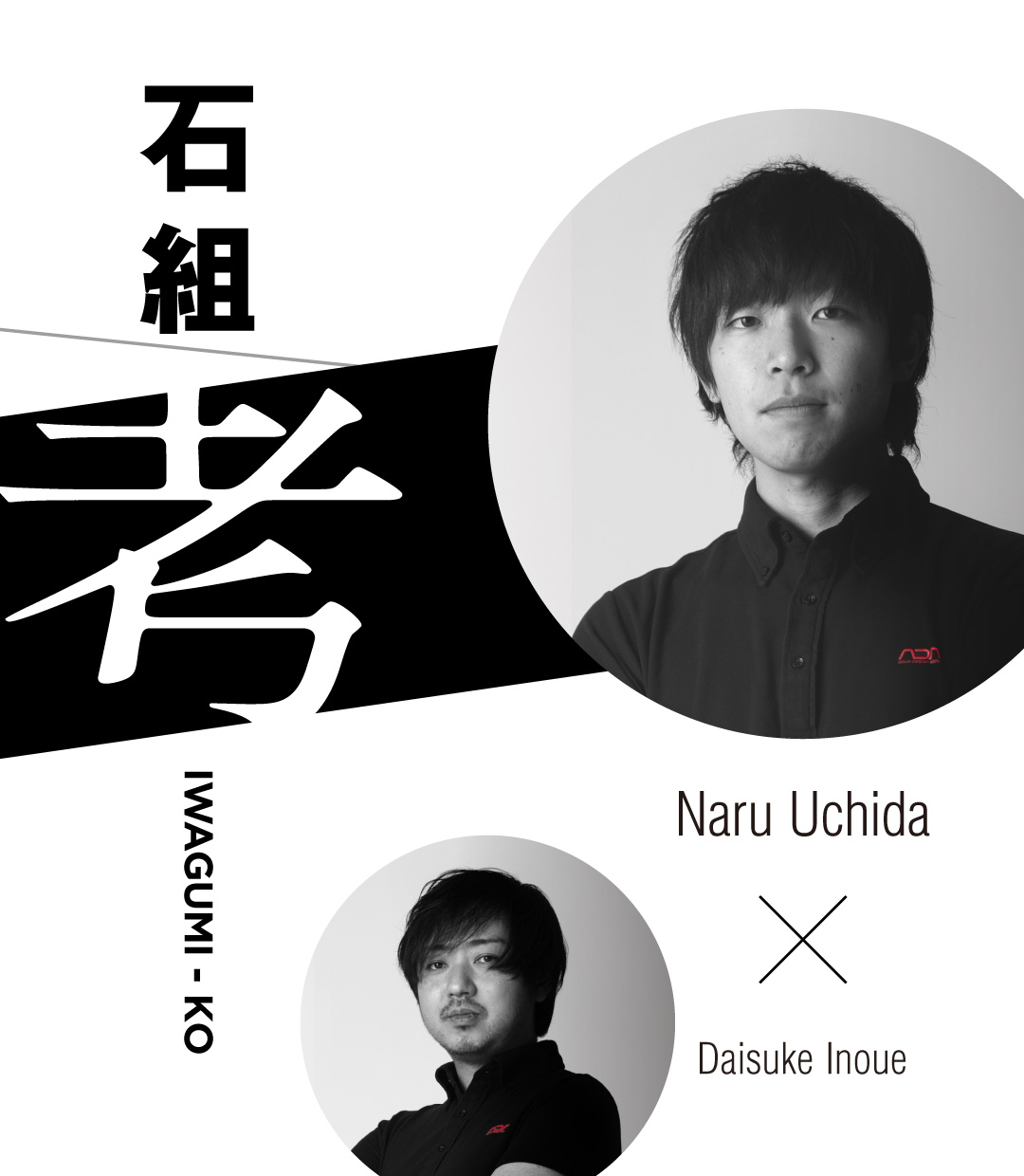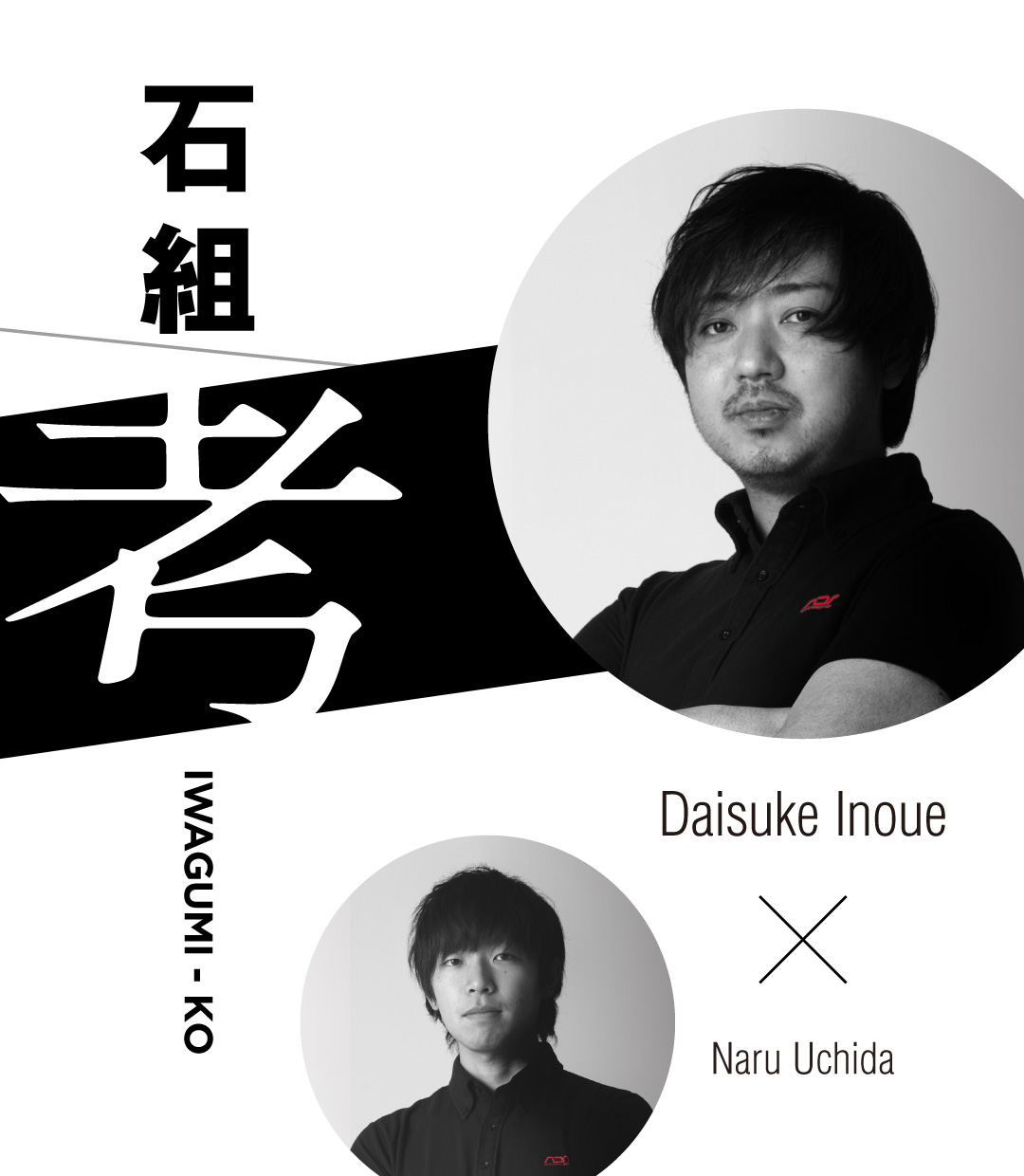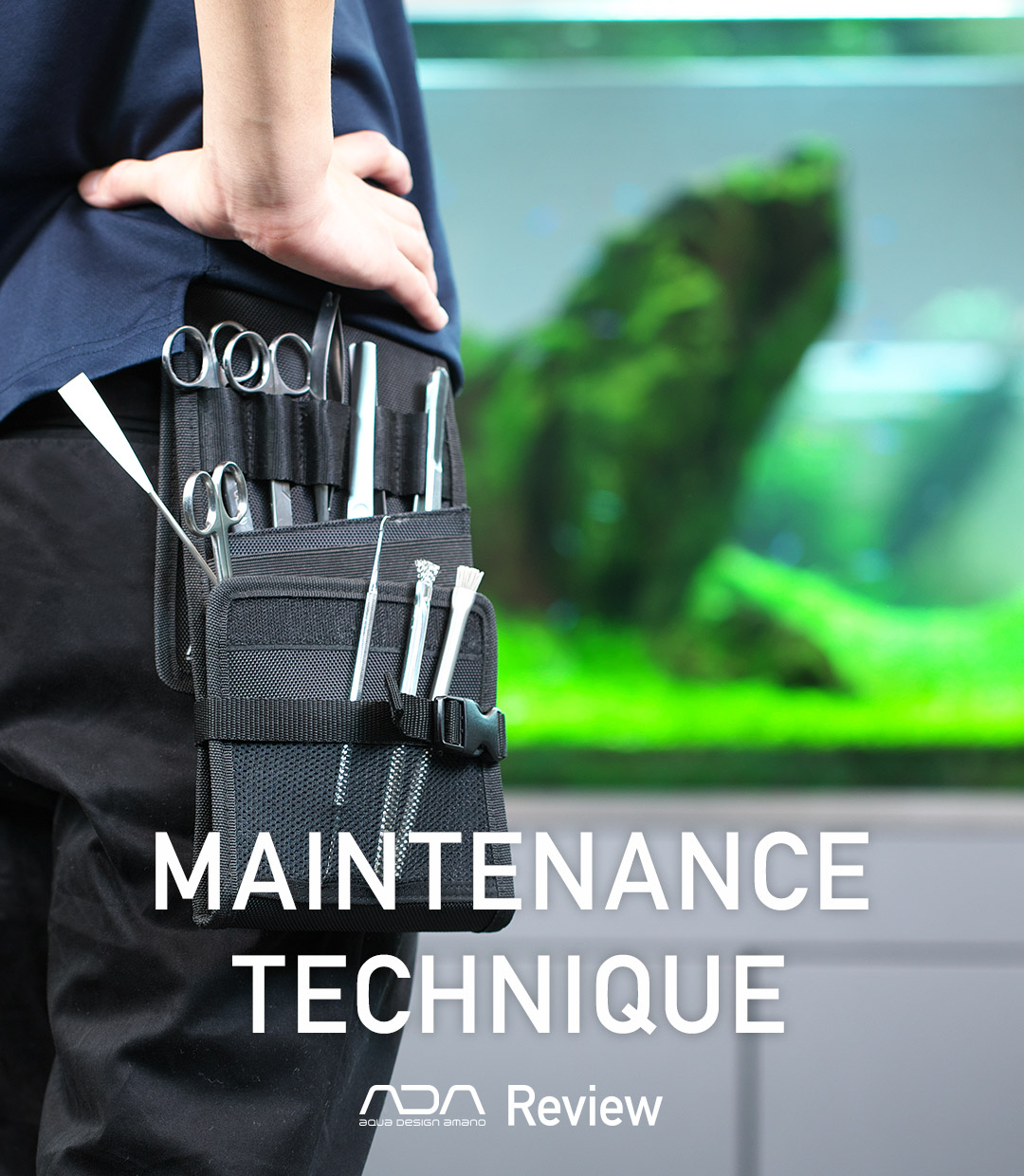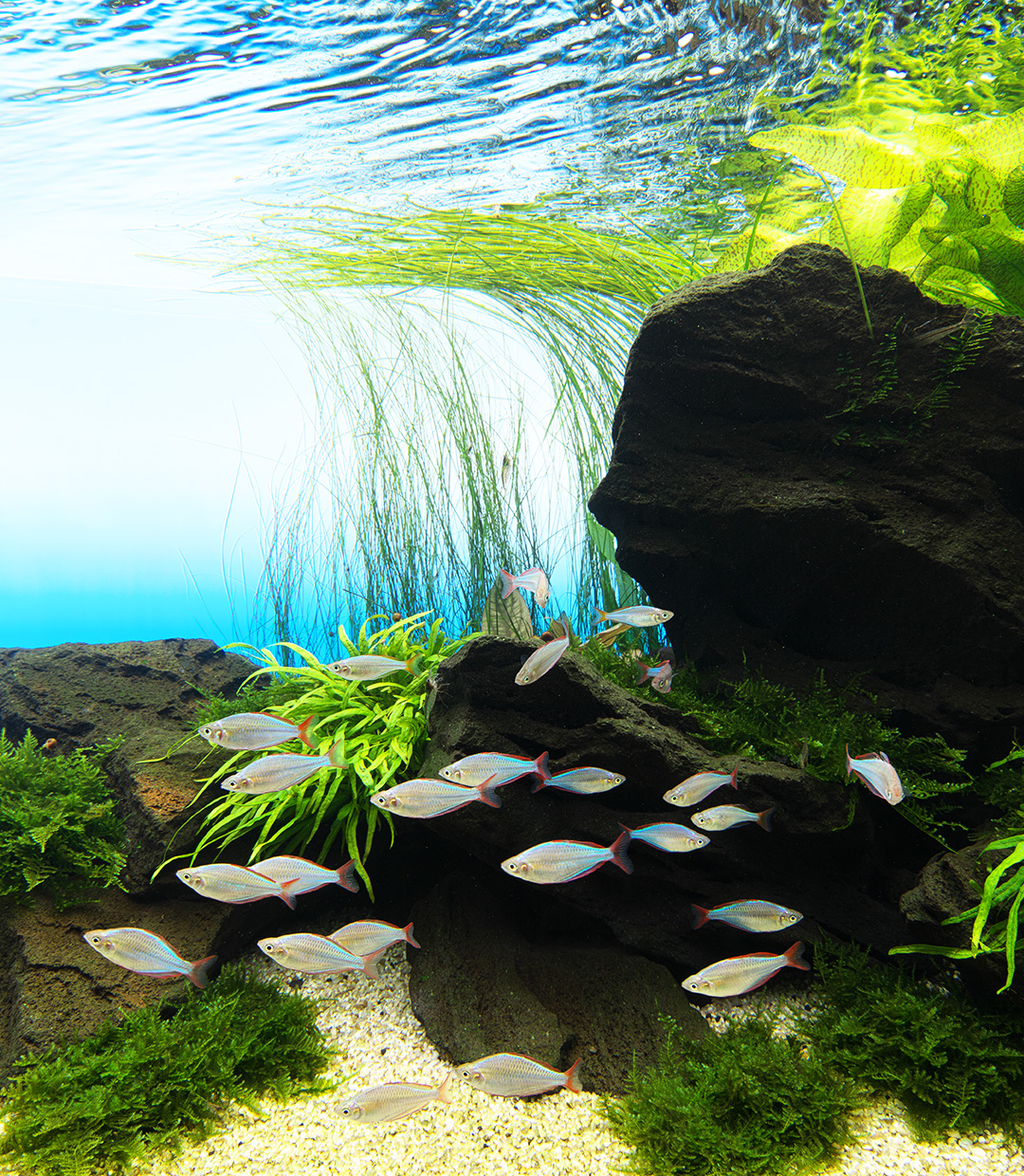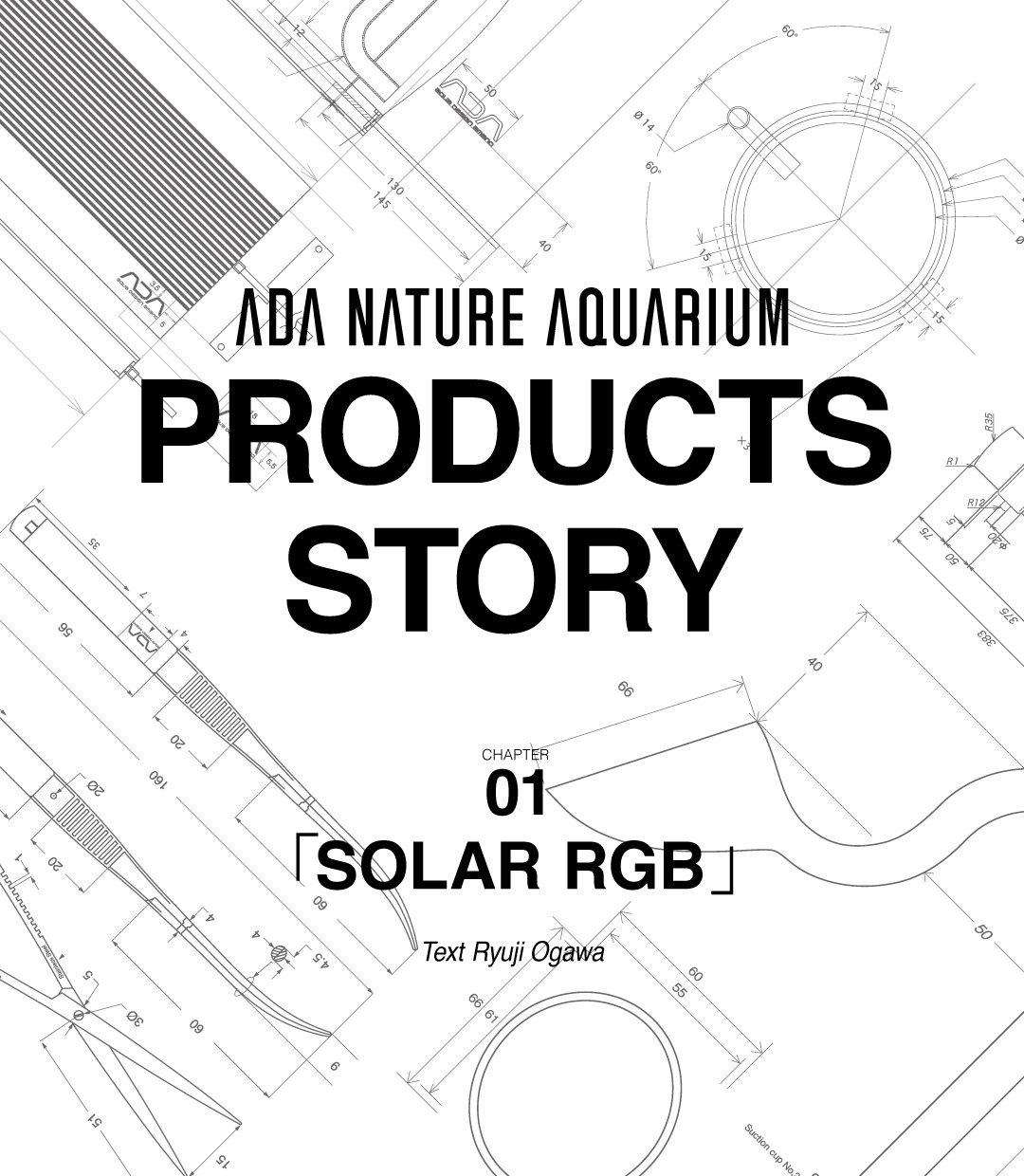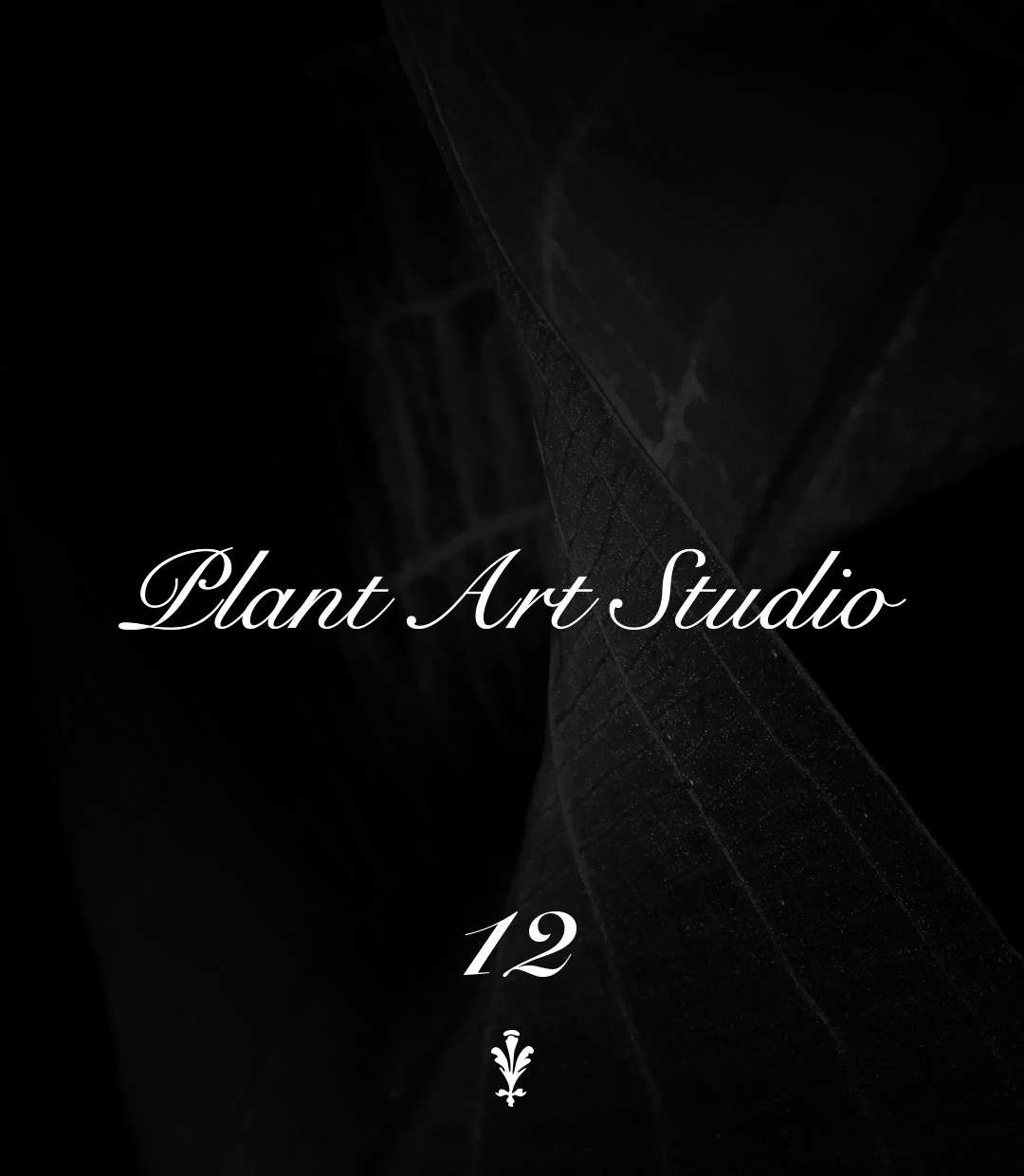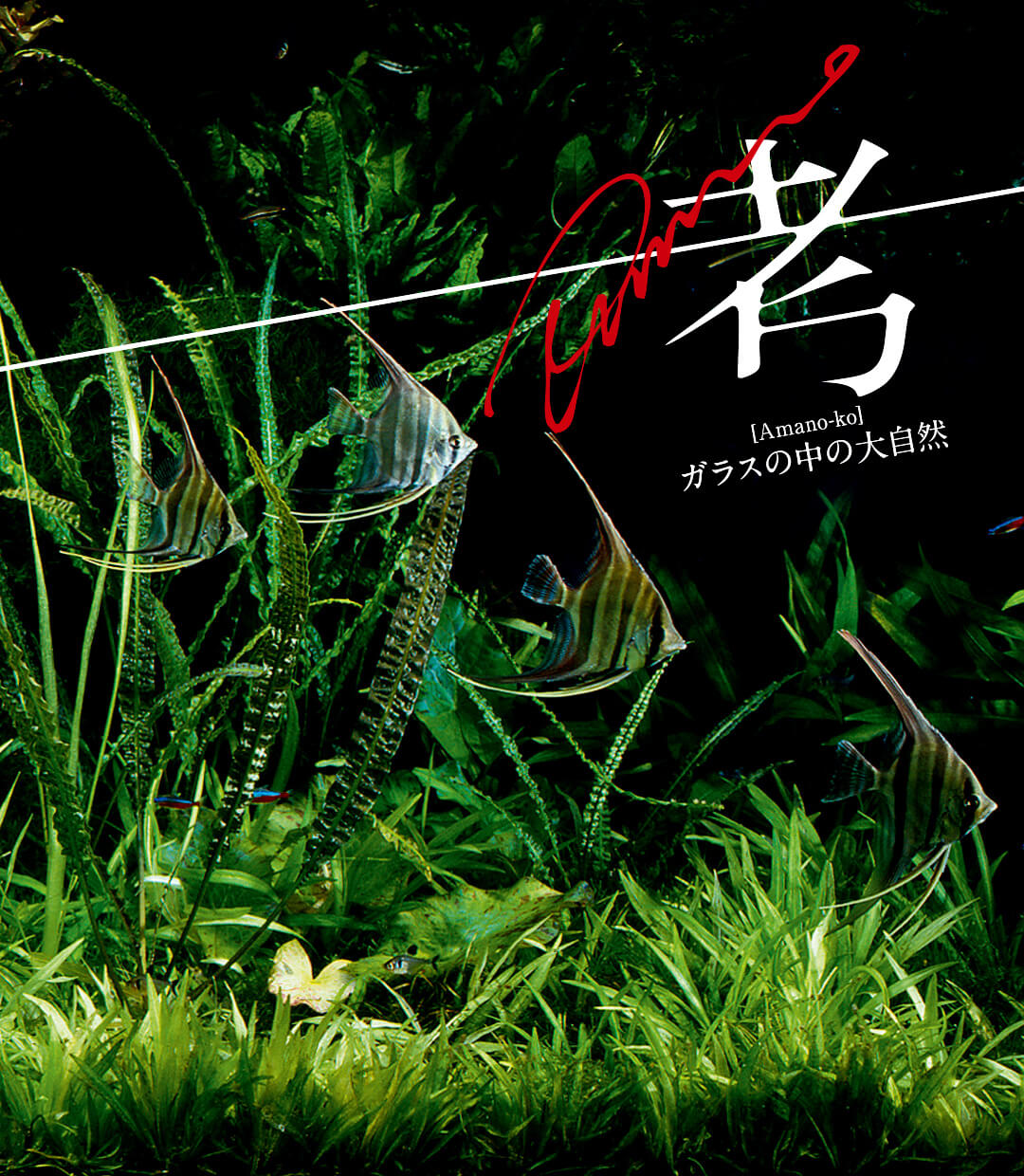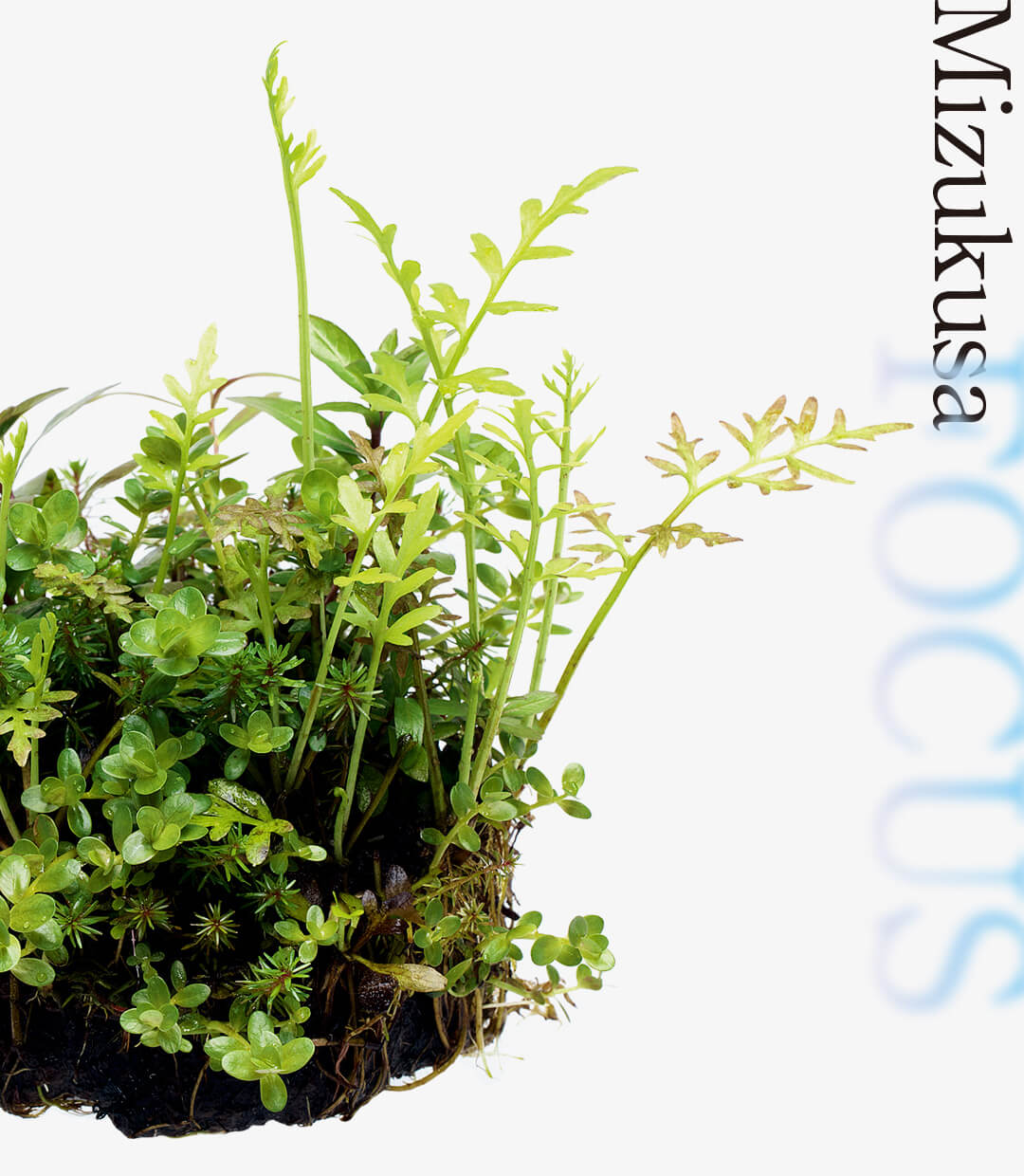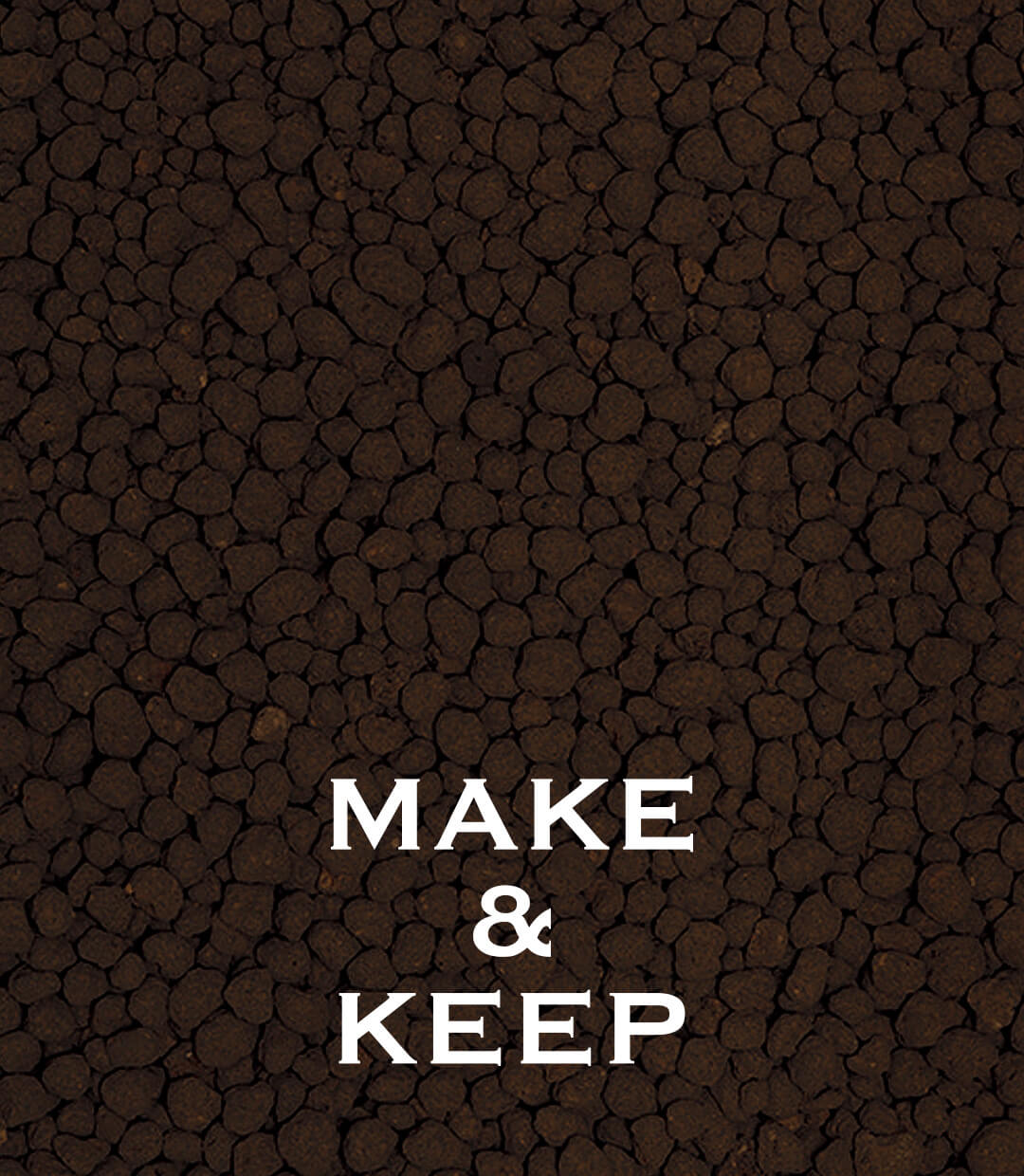ADA Review ‘Maintenance Technique – Iwagumi Layout’
In order to maintain the beautiful appearance of an Iwagumi style aquascape, it is essential to perform daily maintenance according to the nature and characteristics of the stones you use. Here we will introduce how to create and maintain a beautiful aquascape with ADA’s NATURE AQUARIUM products.
The Basics of Aquatic Plants
The whole aim of the Iwagumi layout is to show the best of the stones. Therefore, you can add a natural impression to the aquascape by choosing plants that match the characteristics and textures of the stones. Furthermore, depending on the trimming techniques you use, you can also change the impression of the aquascape drastically, whether it is to eliminate the presence of stones or to make them look more powerful.
Recommended Plants for Iwagumi Layout
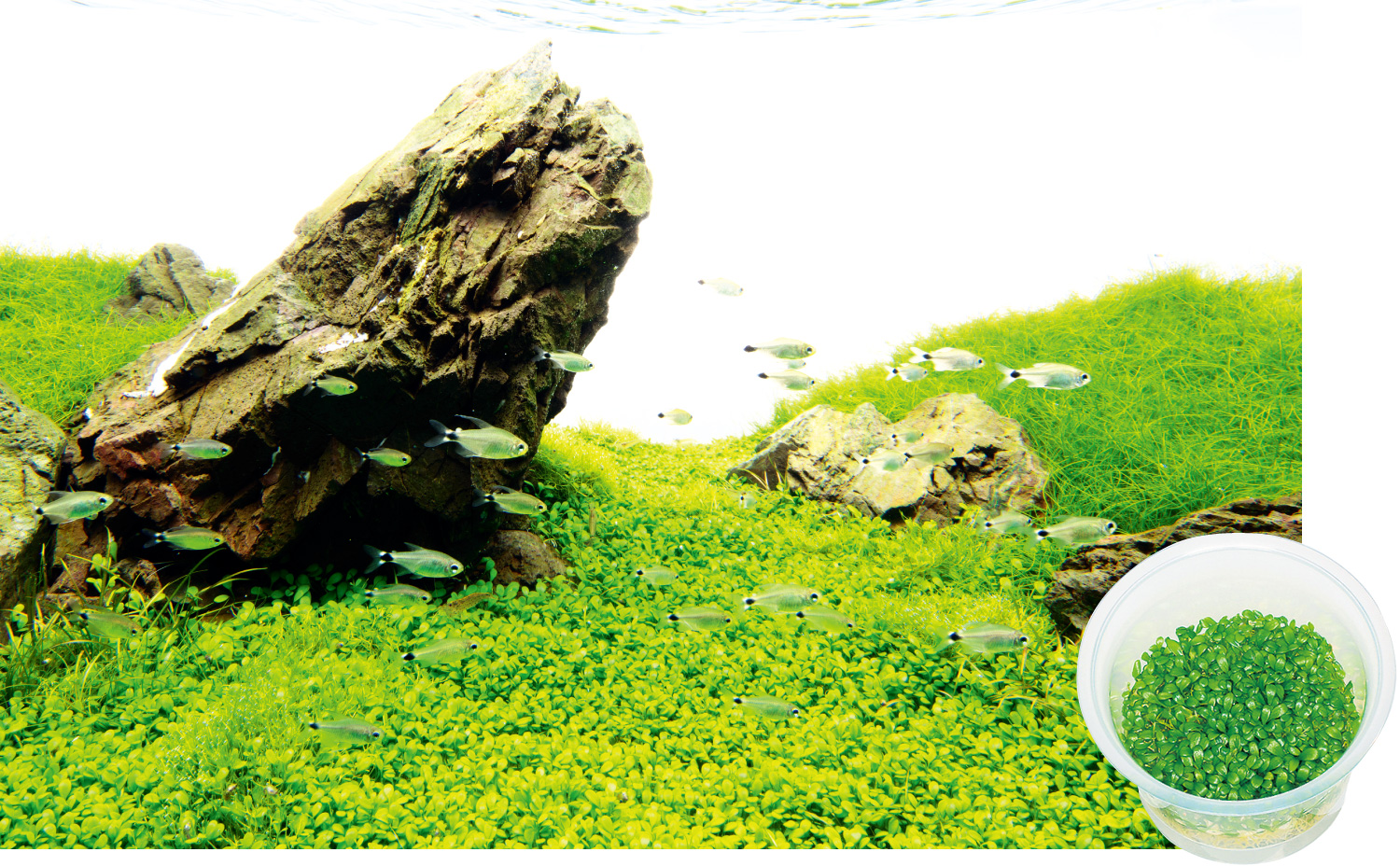
BIO Mizukusa no Mori Glossostigma elatinoides
This aquatic plant is recommended for beginners because it can adapt to a wide range of water quality conditions, and develops beautiful leaves even after numerous trimmings.
This aquatic plant is recommended for beginners because it can adapt to a wide range of water quality conditions, and develops beautiful leaves even after numerous trimmings.
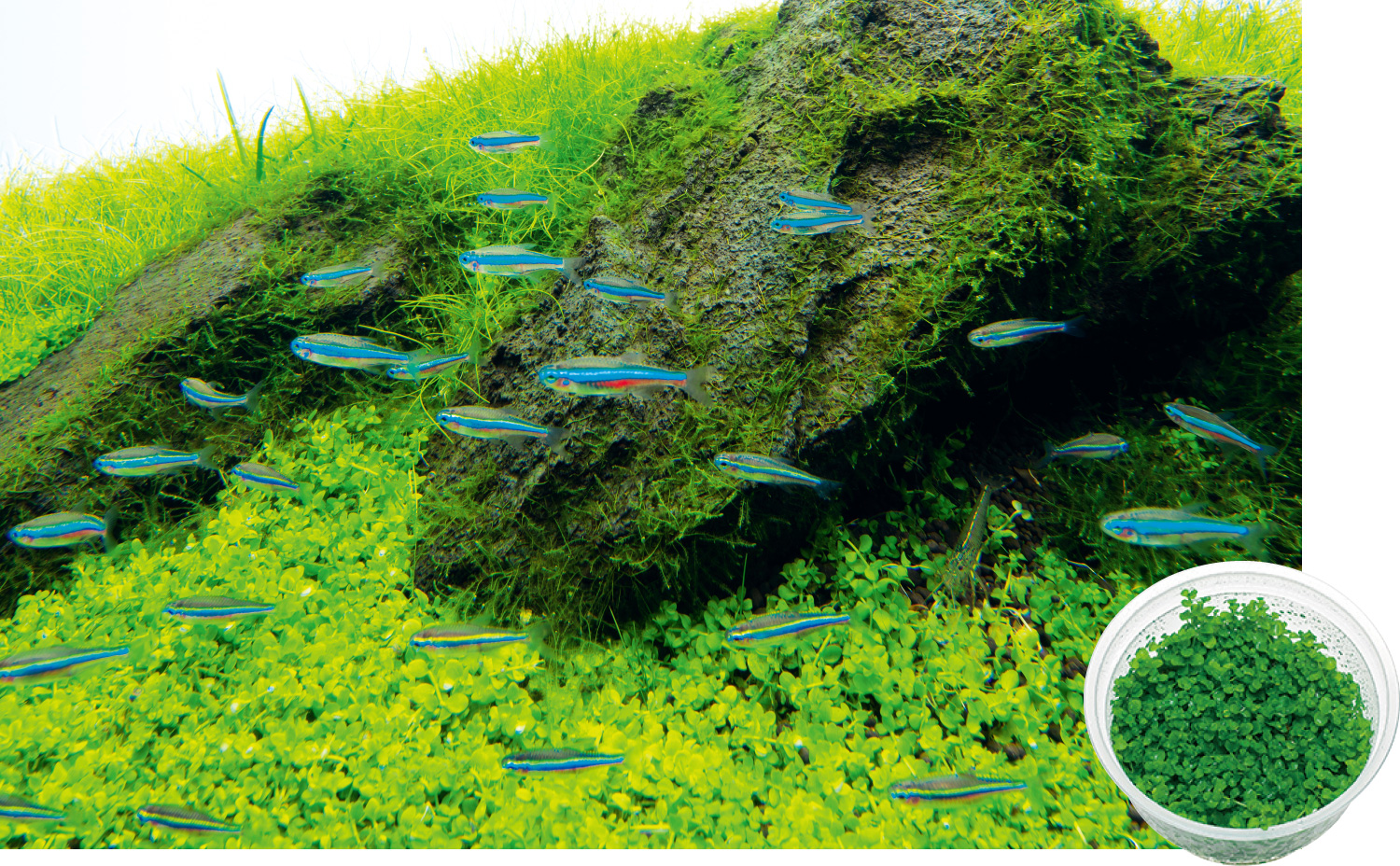
BIO Mizukusa no Mori Micranthemum sp.
Because this aquatic plant is strong and grows rapidly, you can let it crawl between stones and droop down. The plant can grow in slightly hard water.
Because this aquatic plant is strong and grows rapidly, you can let it crawl between stones and droop down. The plant can grow in slightly hard water.
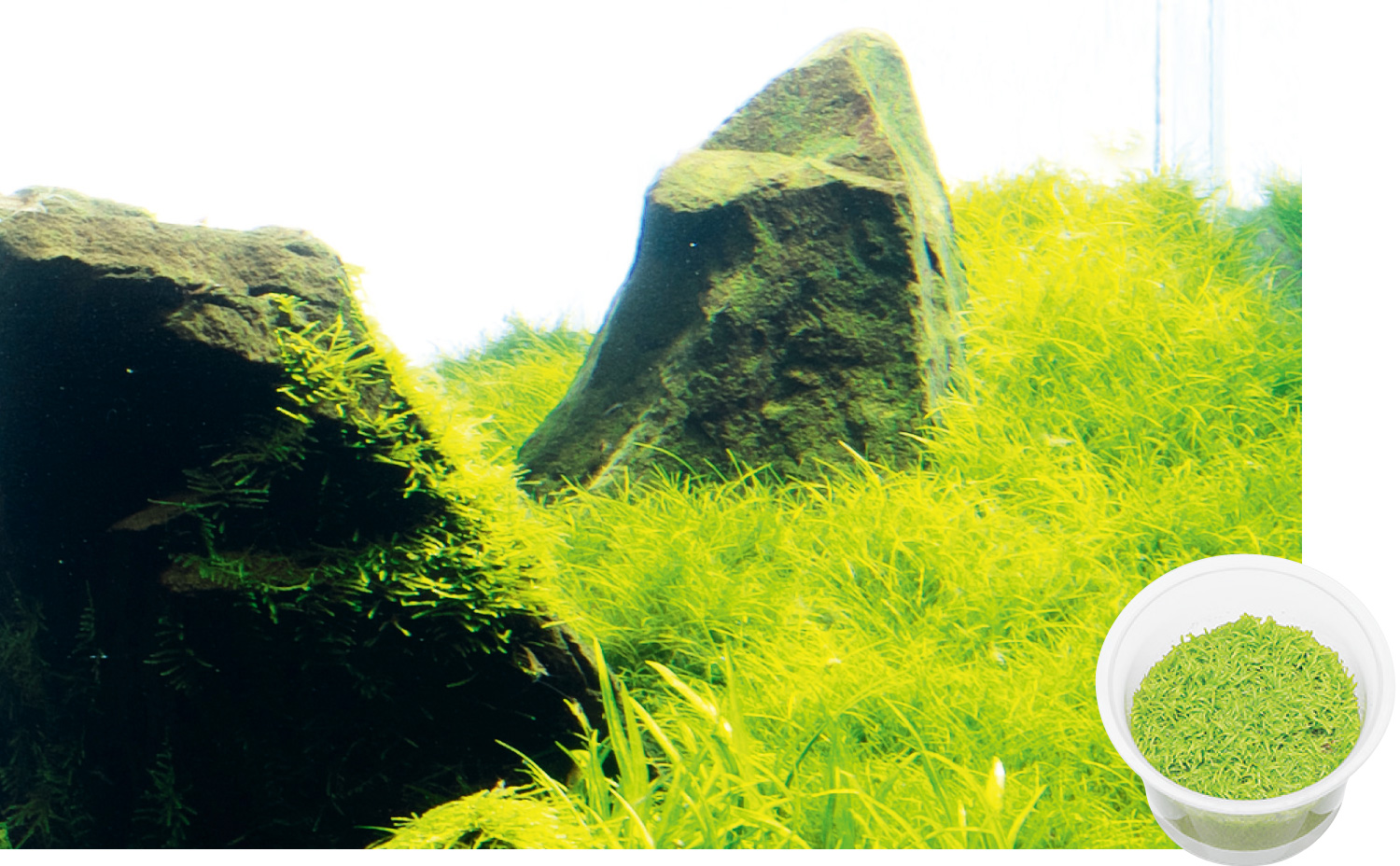
BIO Mizukusa no Mori Utricularia graminifolia
The plant is bright green in color. It easily goes rotten in the early setup stage, but once it gets past that period, it will produce beautiful foliage.
The plant is bright green in color. It easily goes rotten in the early setup stage, but once it gets past that period, it will produce beautiful foliage.
Maintenance Questions
If you miss timing for trimming, short aquatic plants, often called “undergrowth plants”, may grow too thick, and light will not reach the bottom part, causing them to float out of the soil. So trim Glossostigma when it is about 2 cm thick.
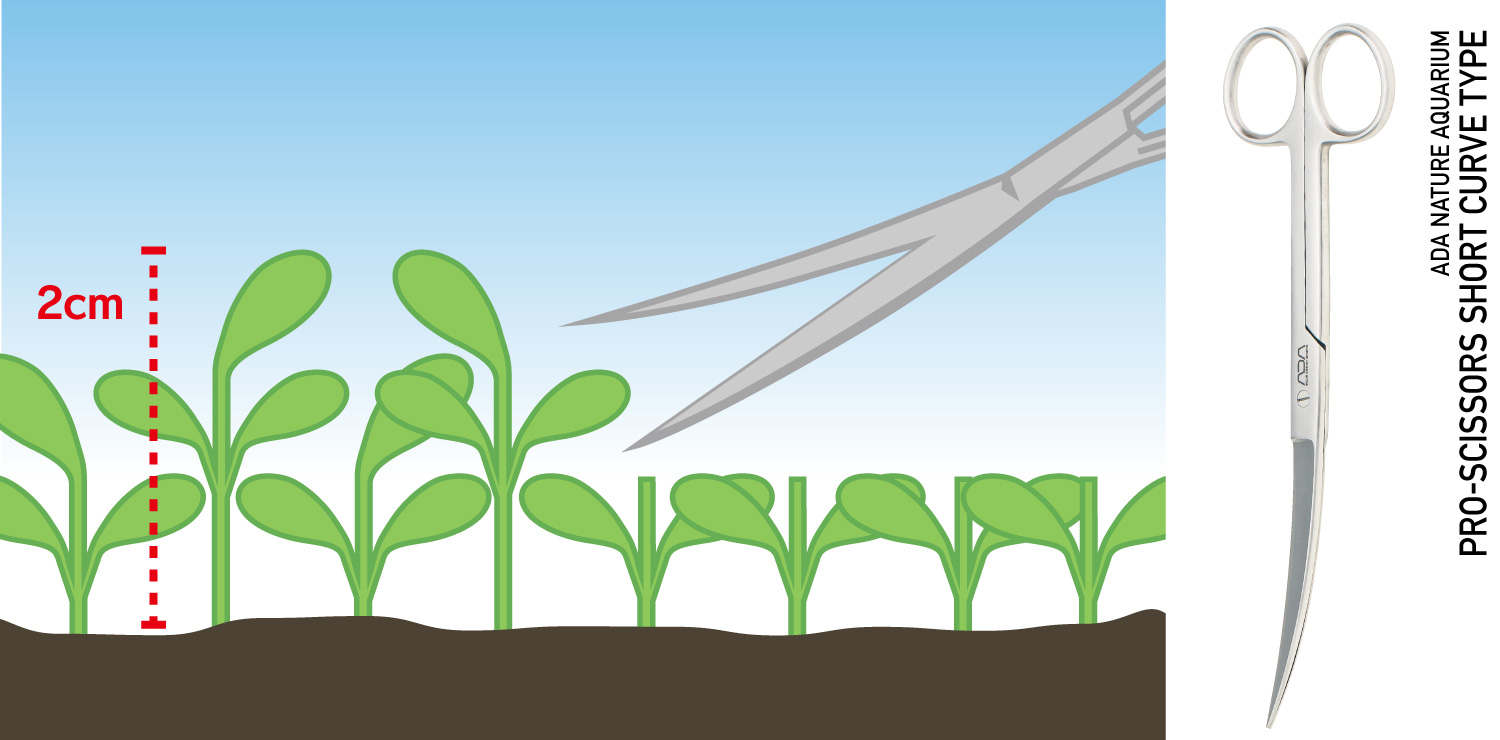
Cutting tightly around stones and near the glass surface will give a sharp impression. Micranthemum sp. should be pruned in the same way, but ones covering stones should be removed in order to maintain a clear appearance of the aquascape.
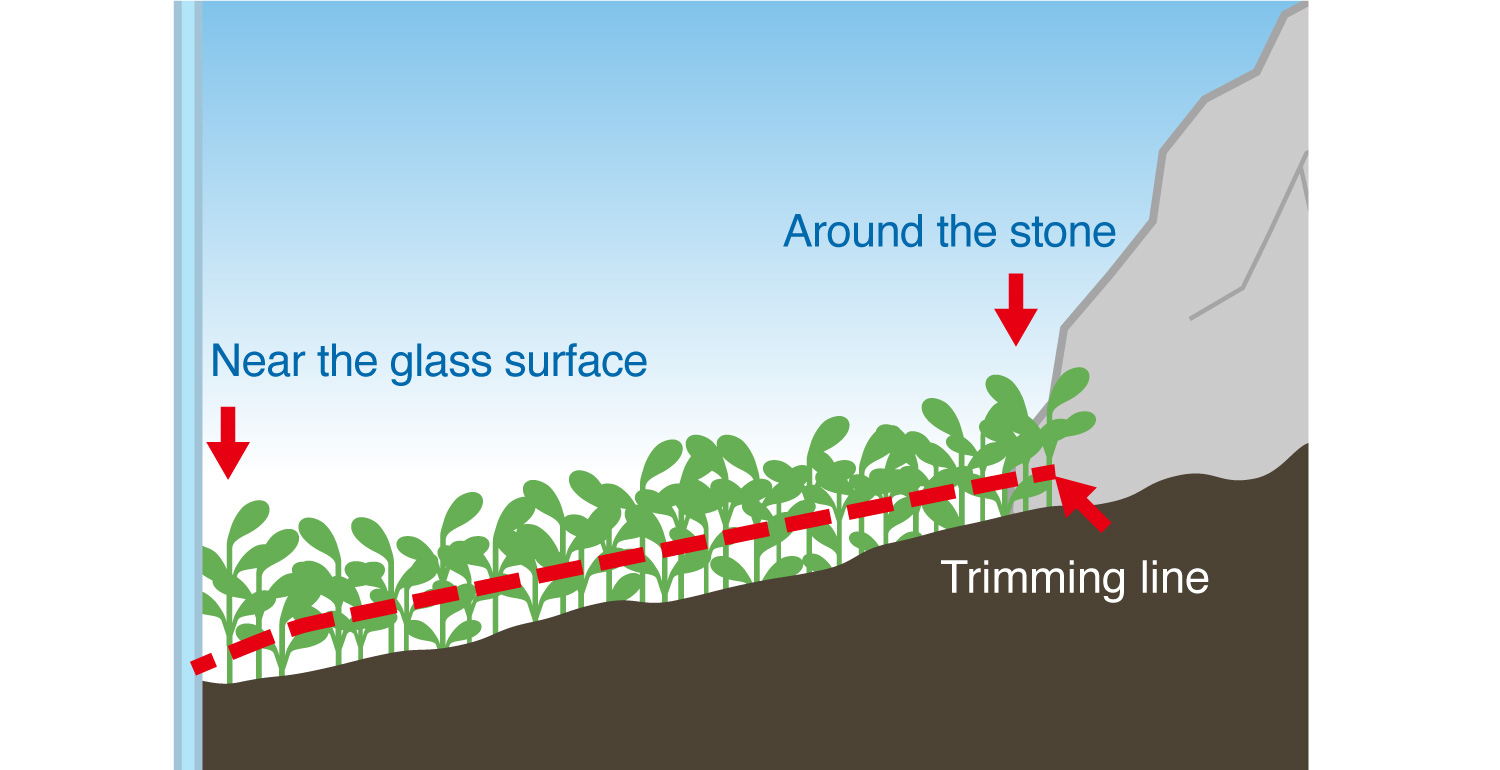
Making Things Easier
When planting Utricularia graminifolia, Amazonia Ver.2 can help control the algae growth at the initial stage, and thus less number of Caridina multidentata is introduced to the tank. It allows you to grow U. graminifolia easily because the plant is less likely pulled out by the shrimp immediately after planting.
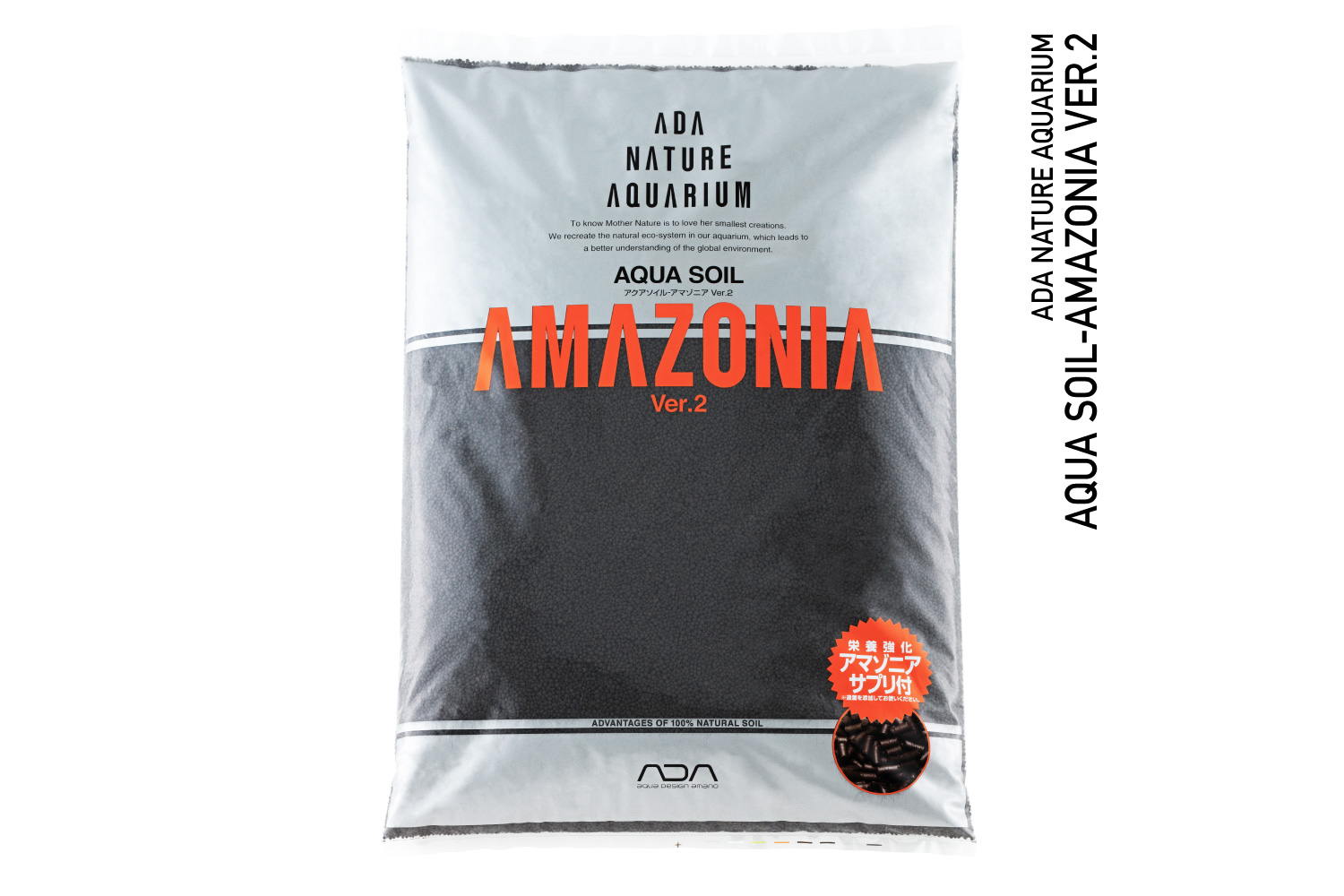
Techniques for Making the Most of Materials
Ryuoh Stone, which often affects aquarium water quality, is considered appropriate for advanced aquascapers. However, by properly using ADA products and controlling water quality, you can grow aquatic plants easily even with Ryuoh Stone.
Characteristics of Ryuoh Stone
Ryuoh Stone is a metamorphosed limestone with unique white streaks. It leaches calcium carbonate into the CO2-infused water, causing pH, TH and KH to rise, and may disturb the growth of aquatic plants. For this reason, ADA offers a lineup of various goods that can help aquatic plants grow nicely even when using Ryuoh Stone or other materials that would affect water quality.
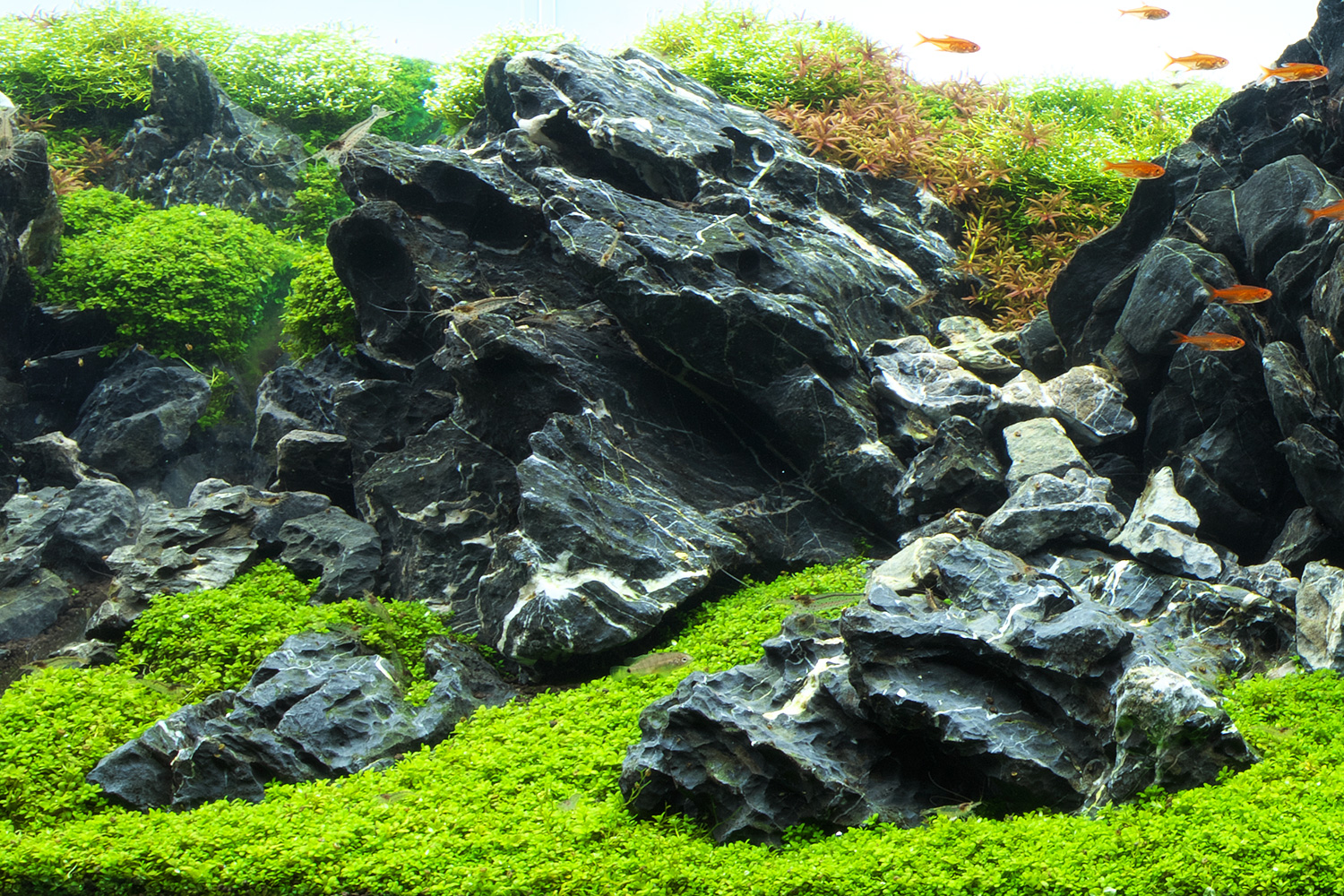
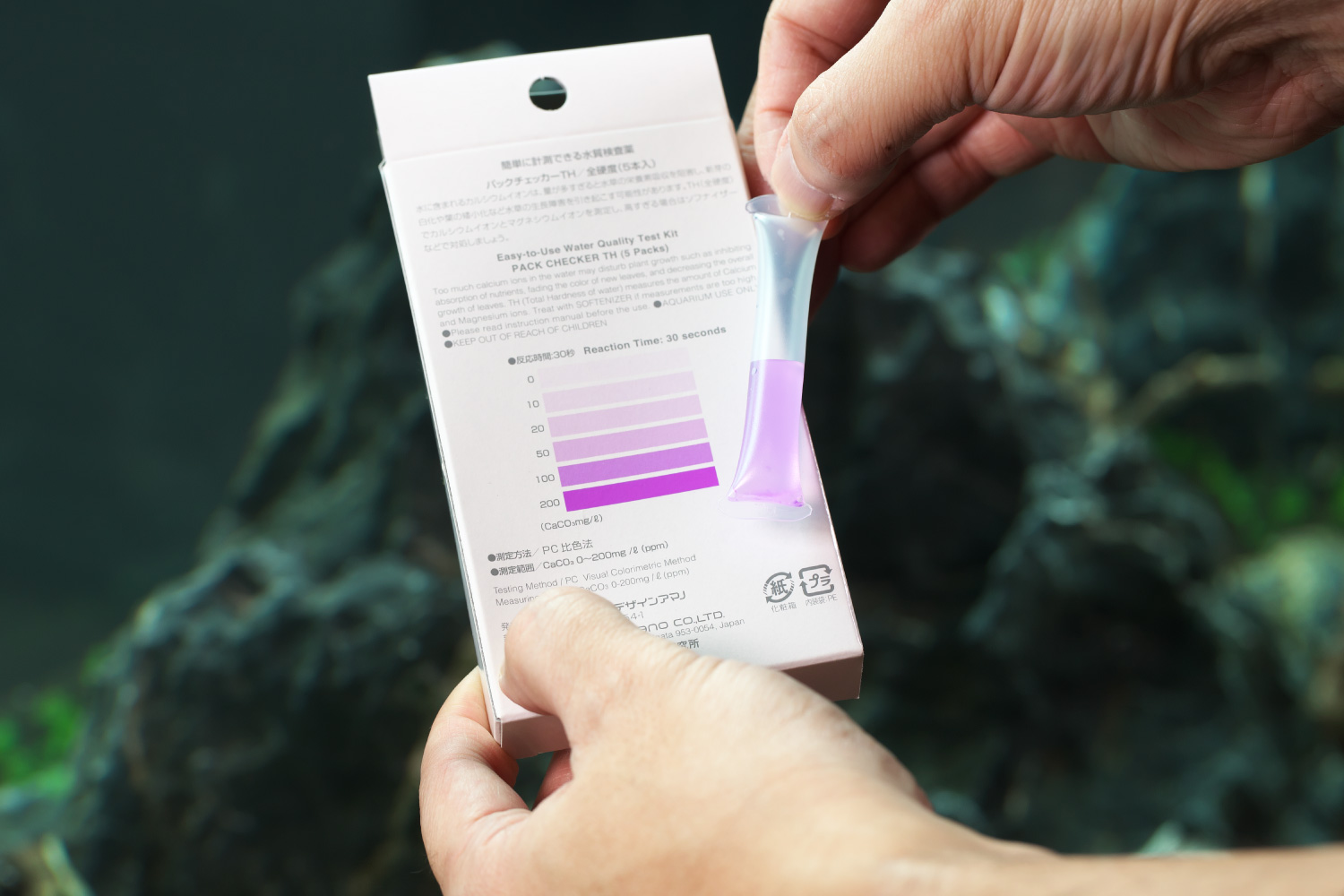
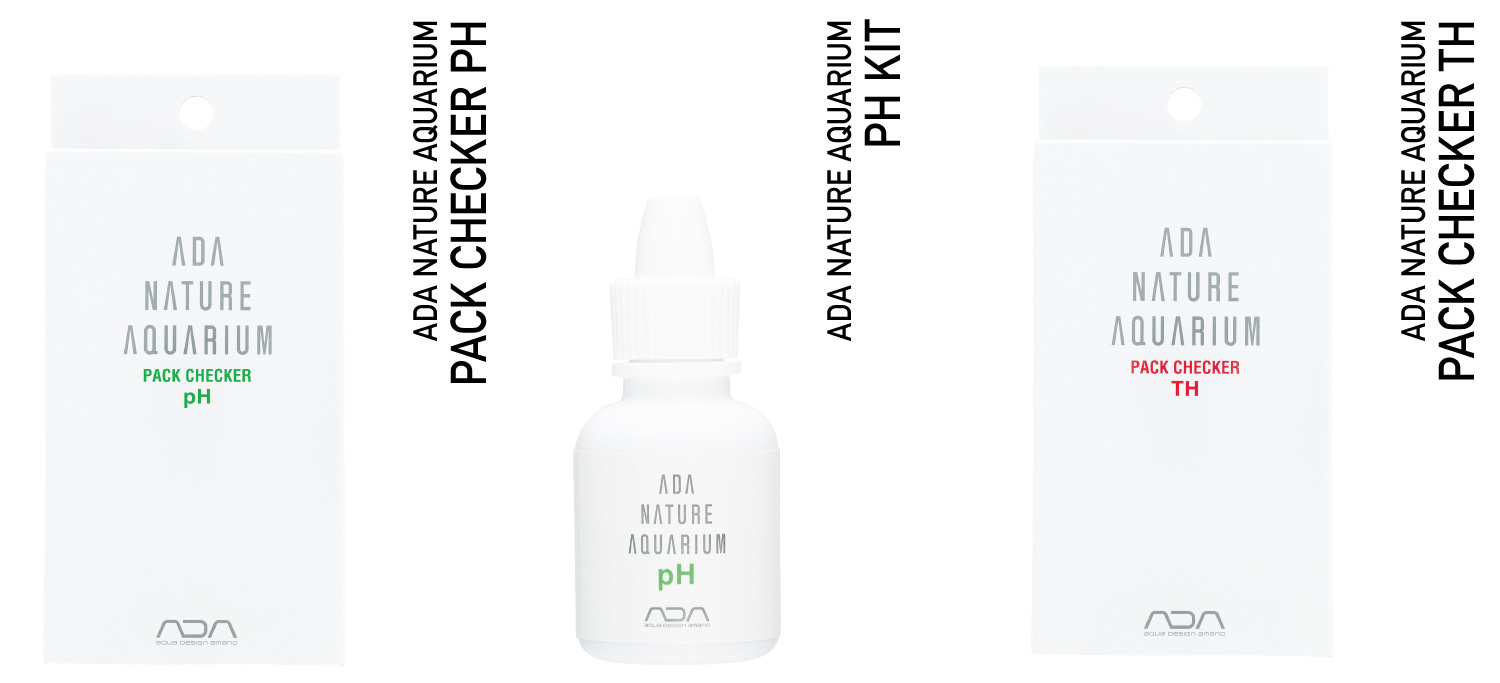
Pack Checker TH: Check TH (total hardness)
Use of ADA Products
Many aquatic plants prefer lower pH and KH, so adding Soft Water is recommended when using Ryuoh Stone as a main layout material. By lowering these values, carbon dioxide is converted to free carbon dioxide, a form of carbon dioxide that is easily used by many aquatic plants for photosynthesis, and good growth can be expected.
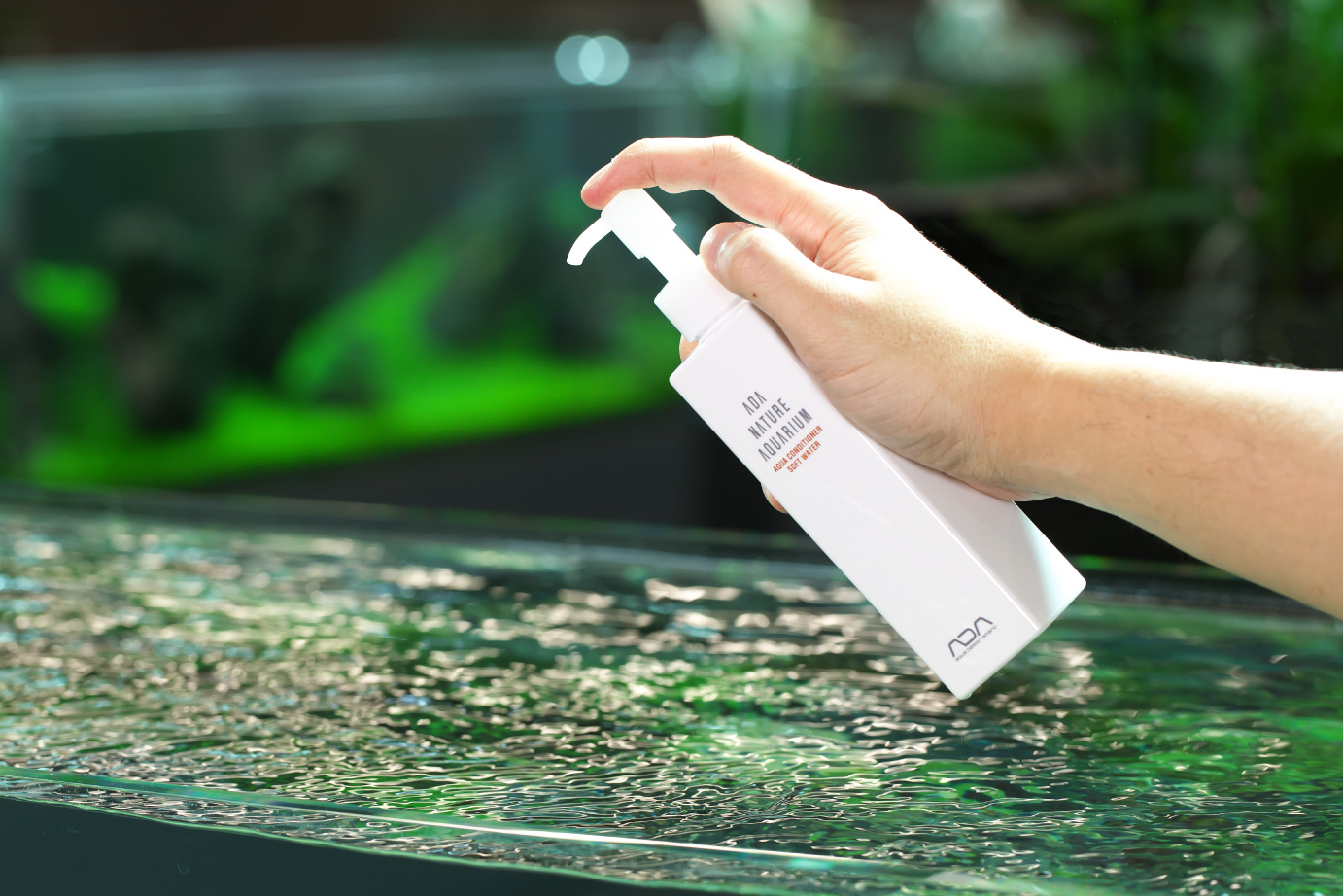
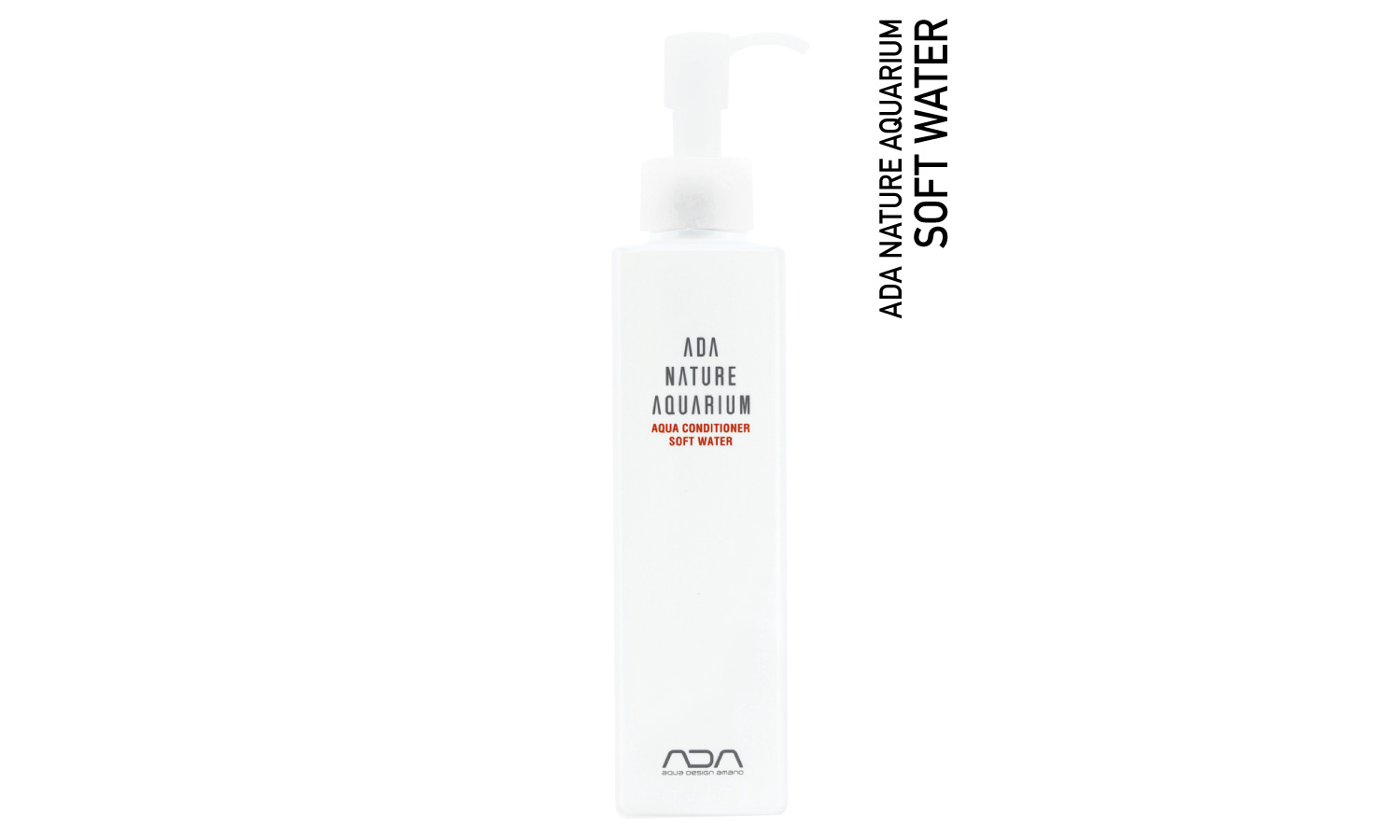
Since TH cannot be lowered by Soft Water, Cation Filter can be used at water changes to lower TH below 50 mg/L and promote absorption of divalent iron by adding Green Brighty Iron and ECA Plus. This will help maintain good leaf color.
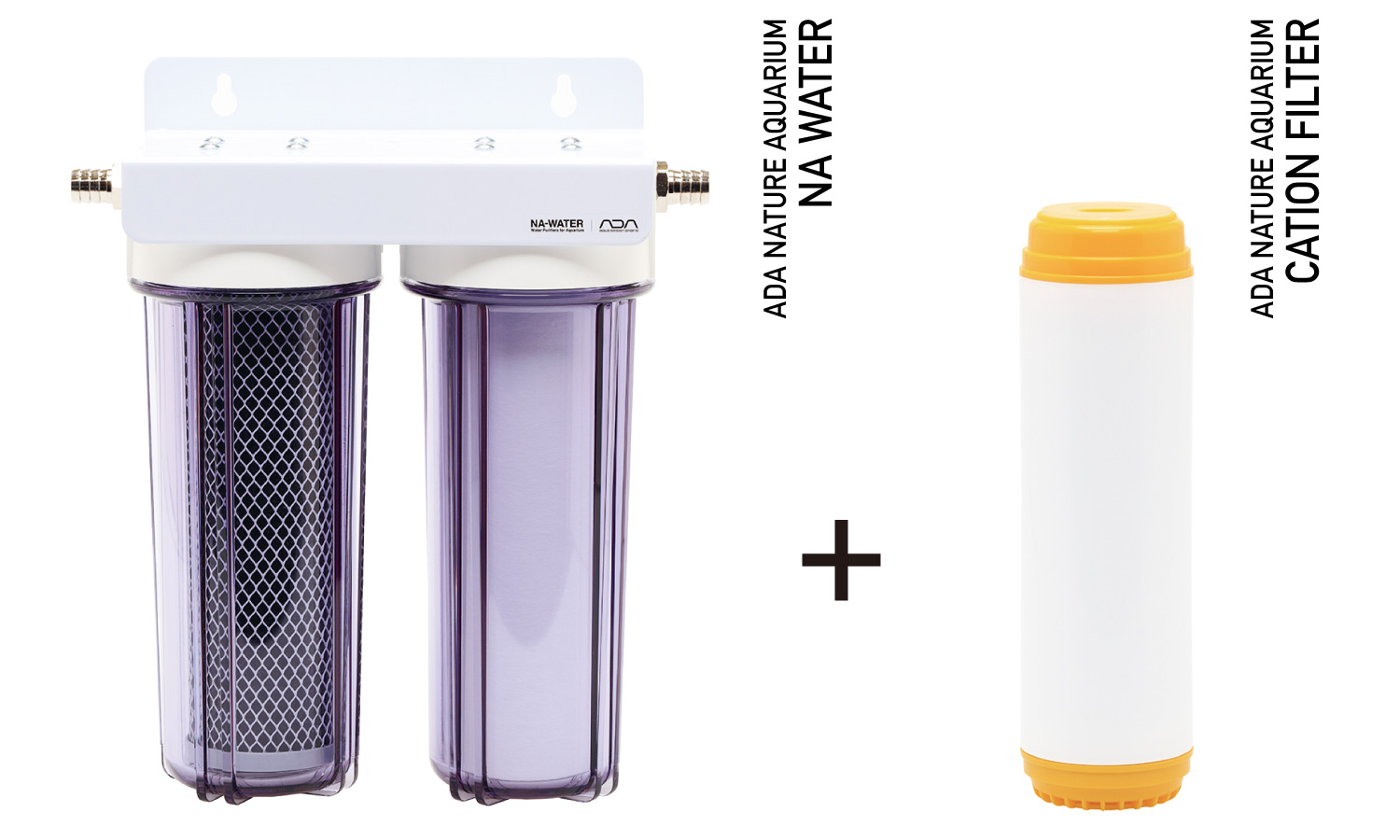
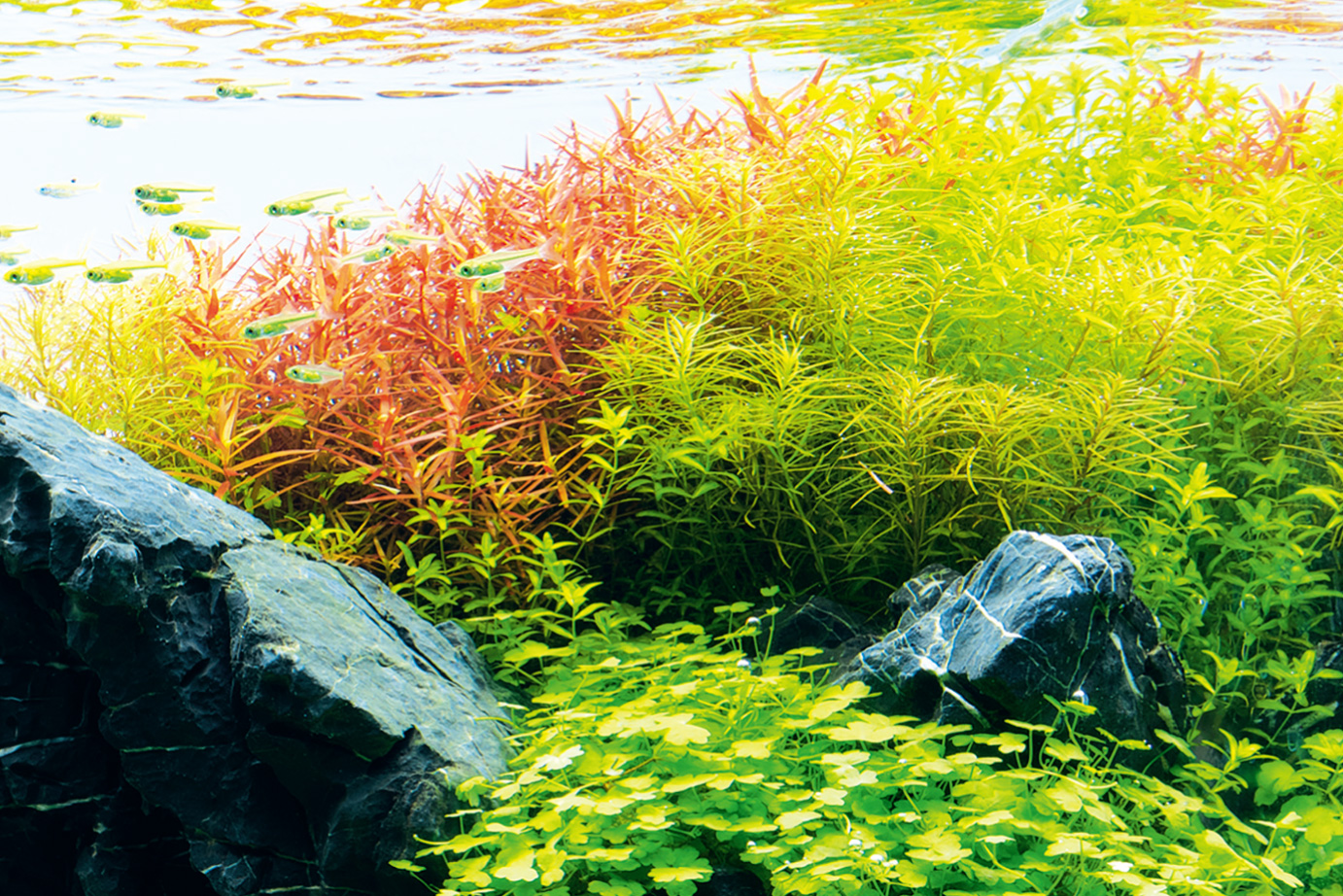
By using these products, stem plants can flourish nicely in the Iwagumi layout.
Removing Algae from Stone
Various types of algae will grow on stones over time, just as they will develop on the aquarium glass surface. With the right tool for the right type of algae, you can keep the face of Iwagumi layout (stones) clean, and maintain the beauty of each individual stone.
Green algae on Stone Surfaces
This dark-colored algae greatly affects the appearance of aquascapes. It can be removed with a nylon brush, but small details, such as cracks on stone surfaces, can be cleaned off better with Pro-Brush.
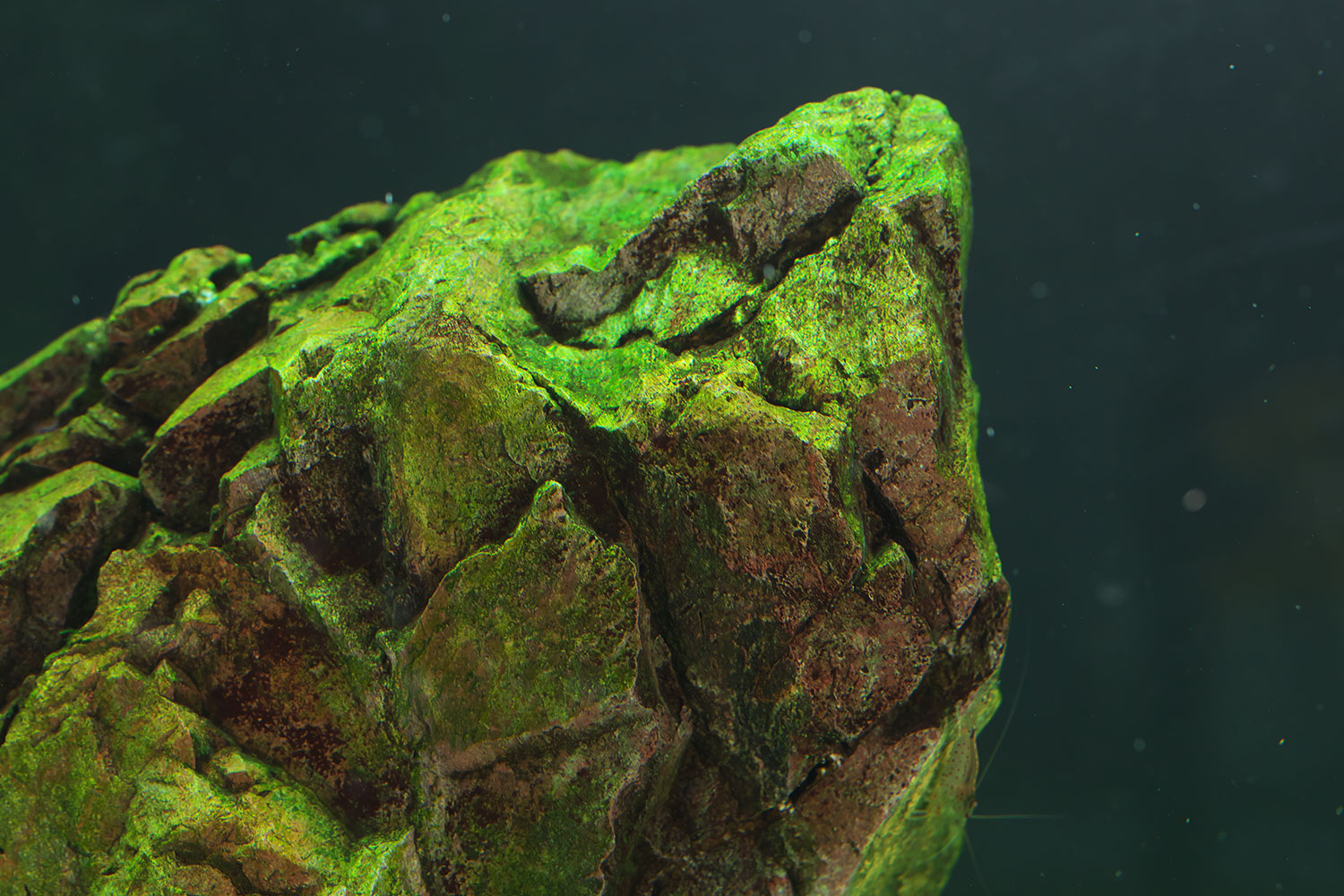
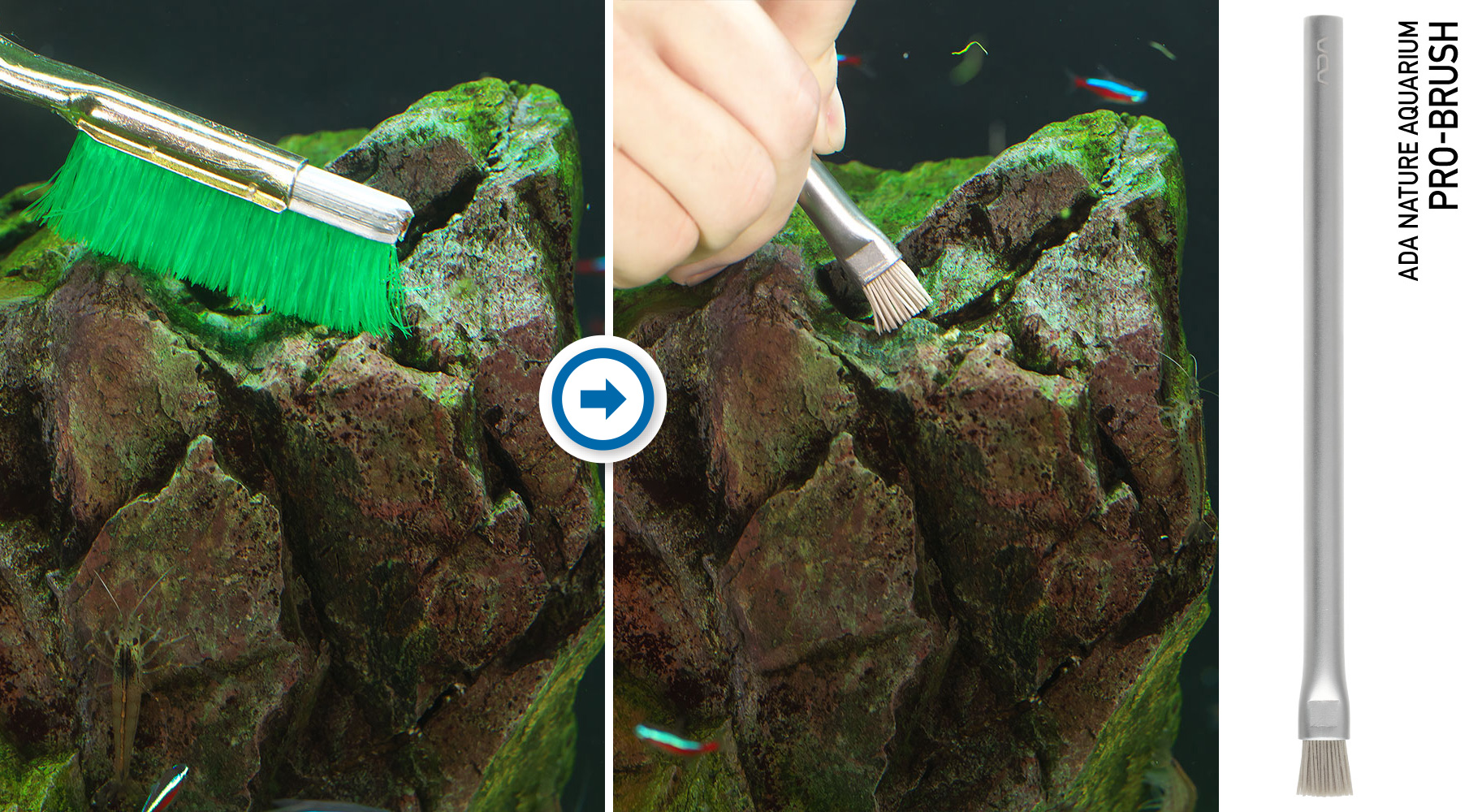
Staghorn algae
Like beard algae, it grows on stones. Because this type of algae is softer than beard algae, it is effective to remove it with Pro-Brush Hard together with Pro Picker.
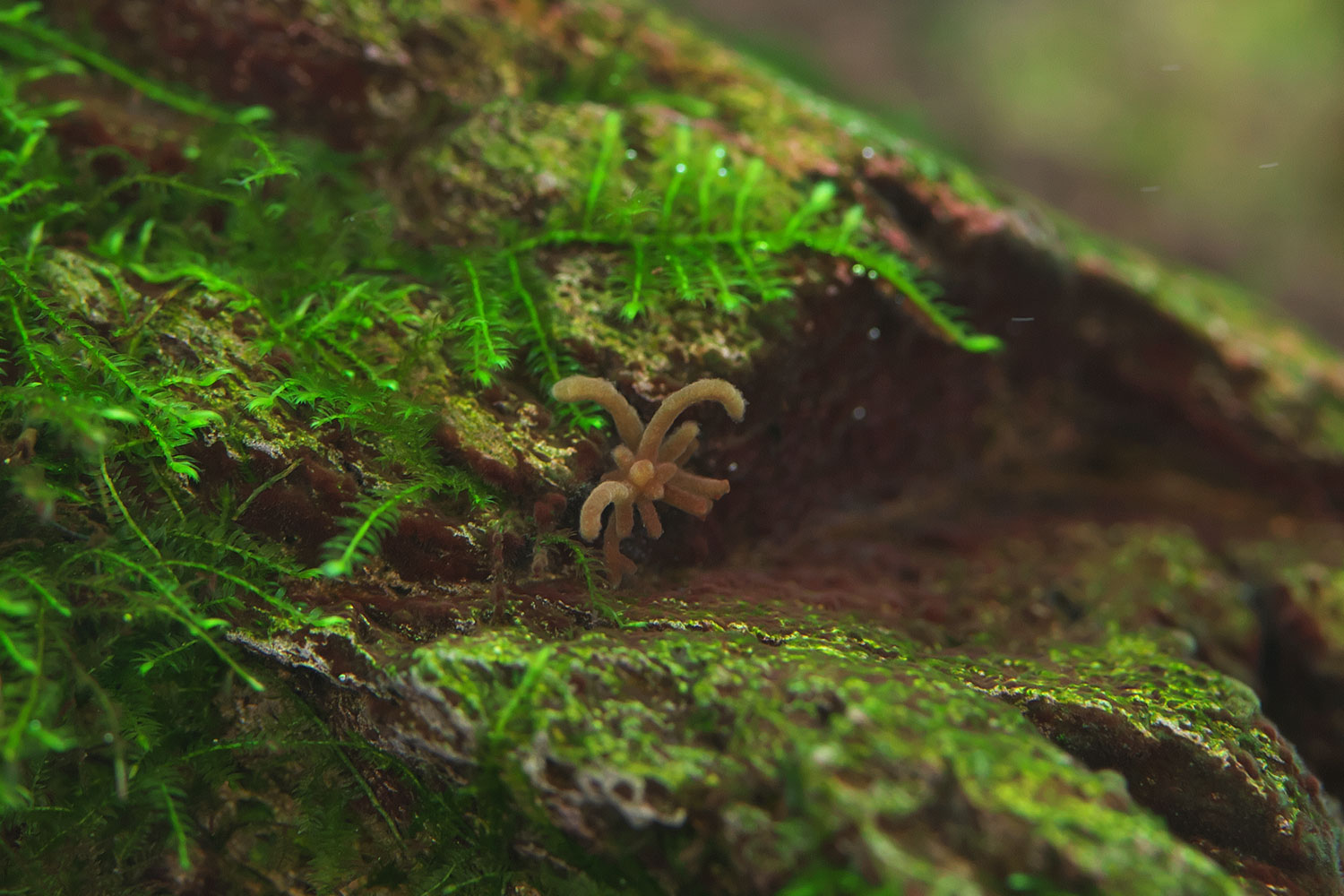
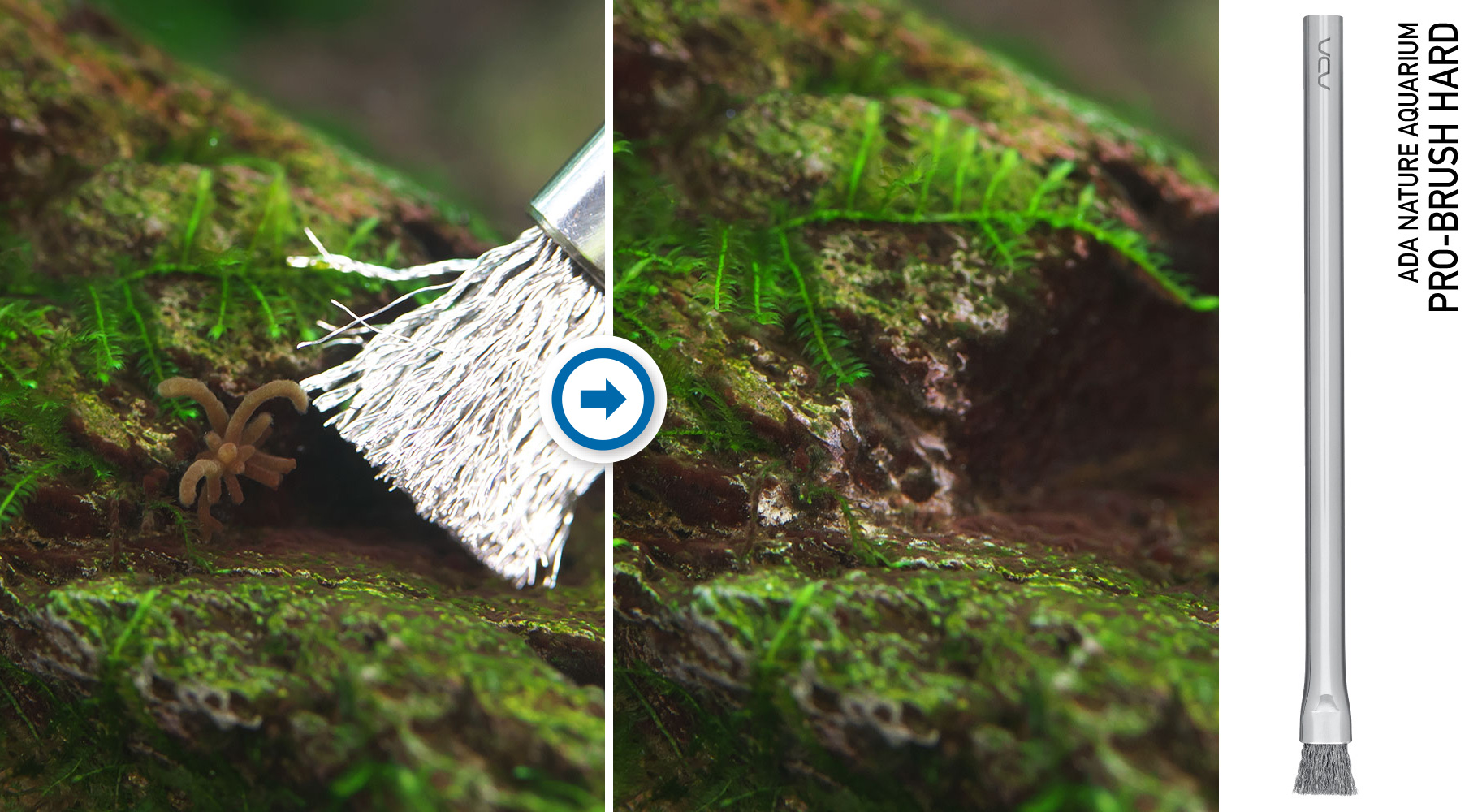
Beard Algae
This type of algae is often found in long-maintained aquascapes. Since beard algae attaches firmly to stones, use tools that can apply force with pinpoint accuracy, such as Pro Picker, to remove it.
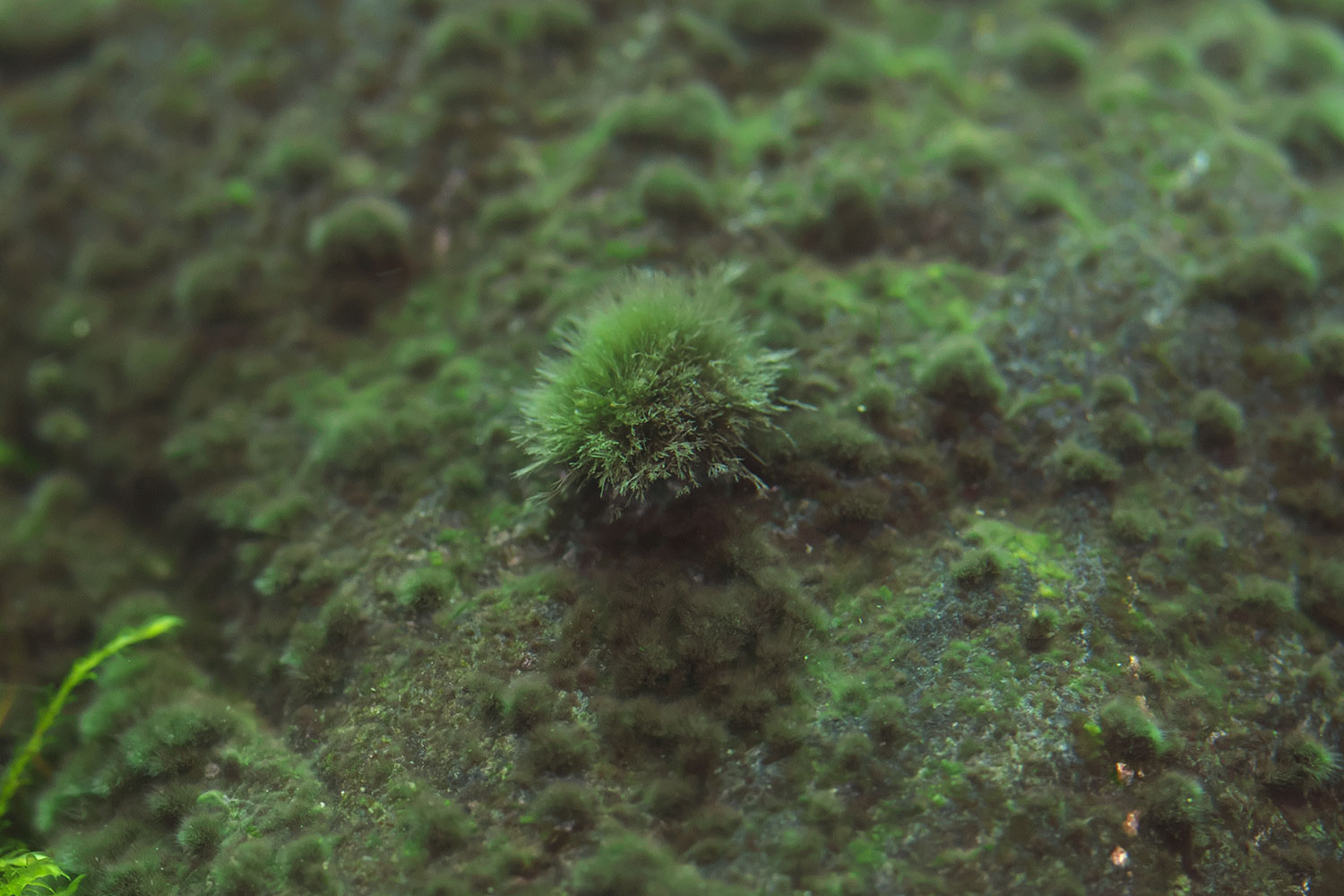
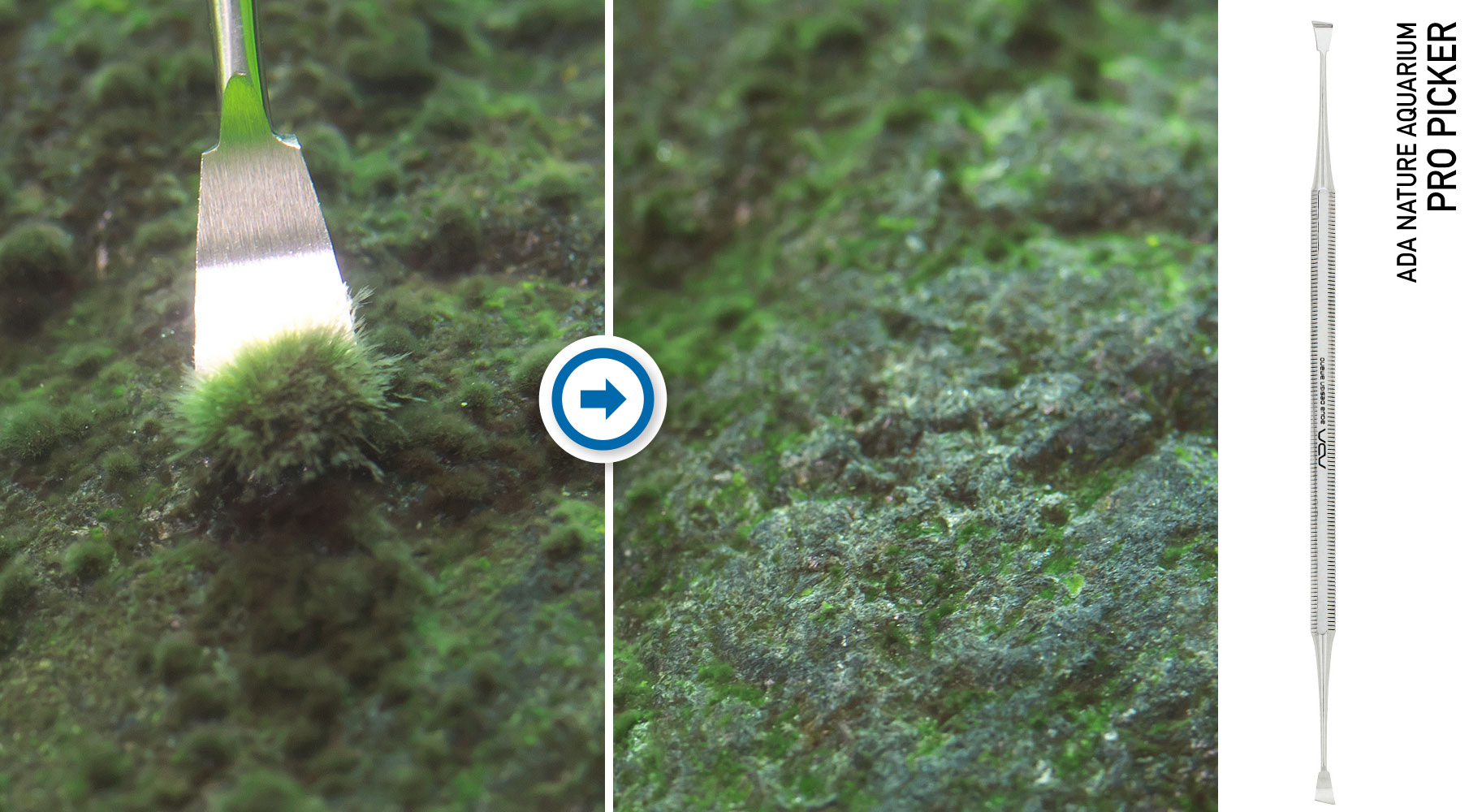
Asajirella gelatinosa
Because it spreads quickly and can easily grow out of torn fragments, it is effective to get rid of it by siphoning it out. When the algae gets into the rugged surface of stone, like Unzan Stone, use Pro Picker to scrape it out.
